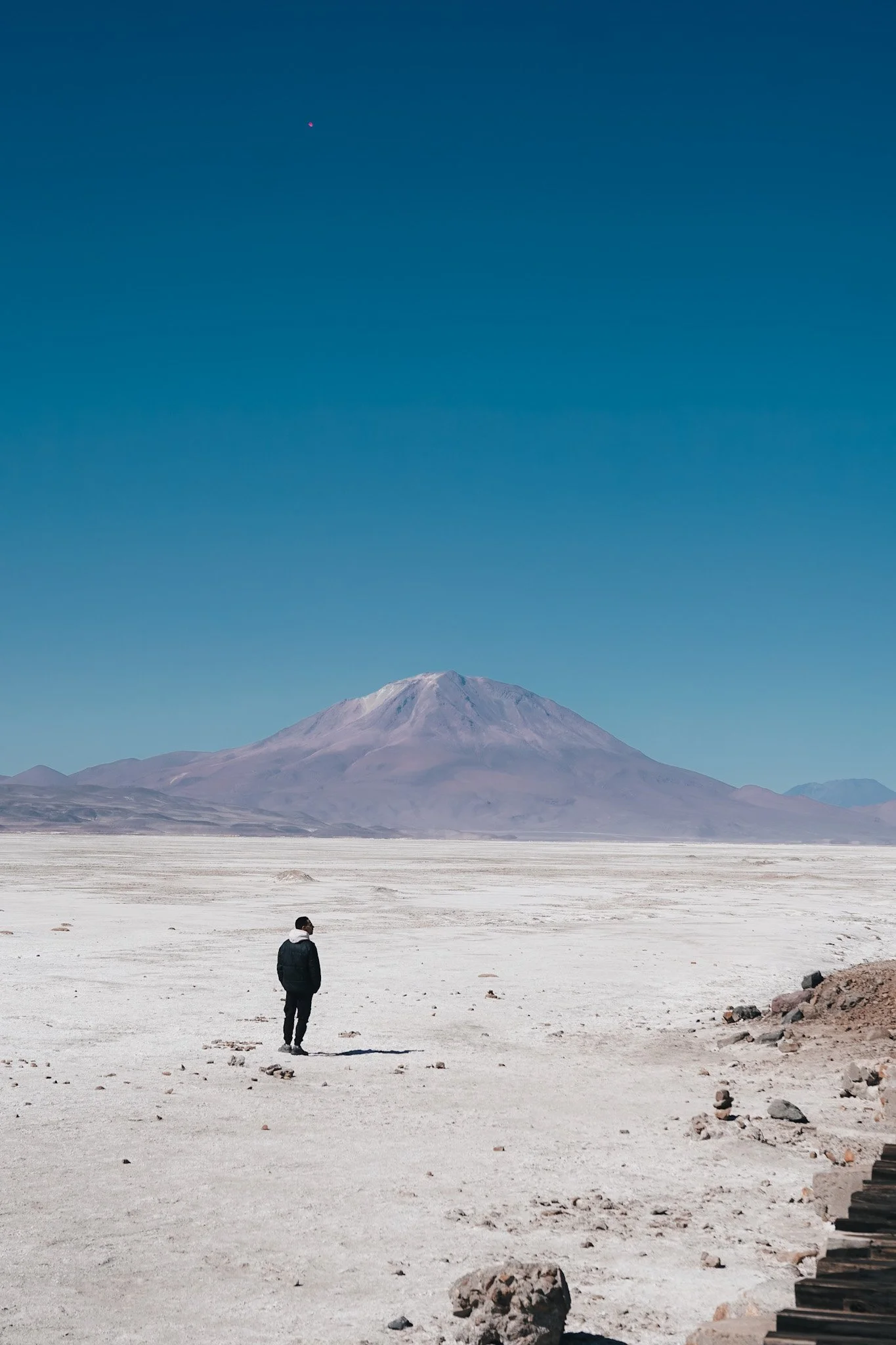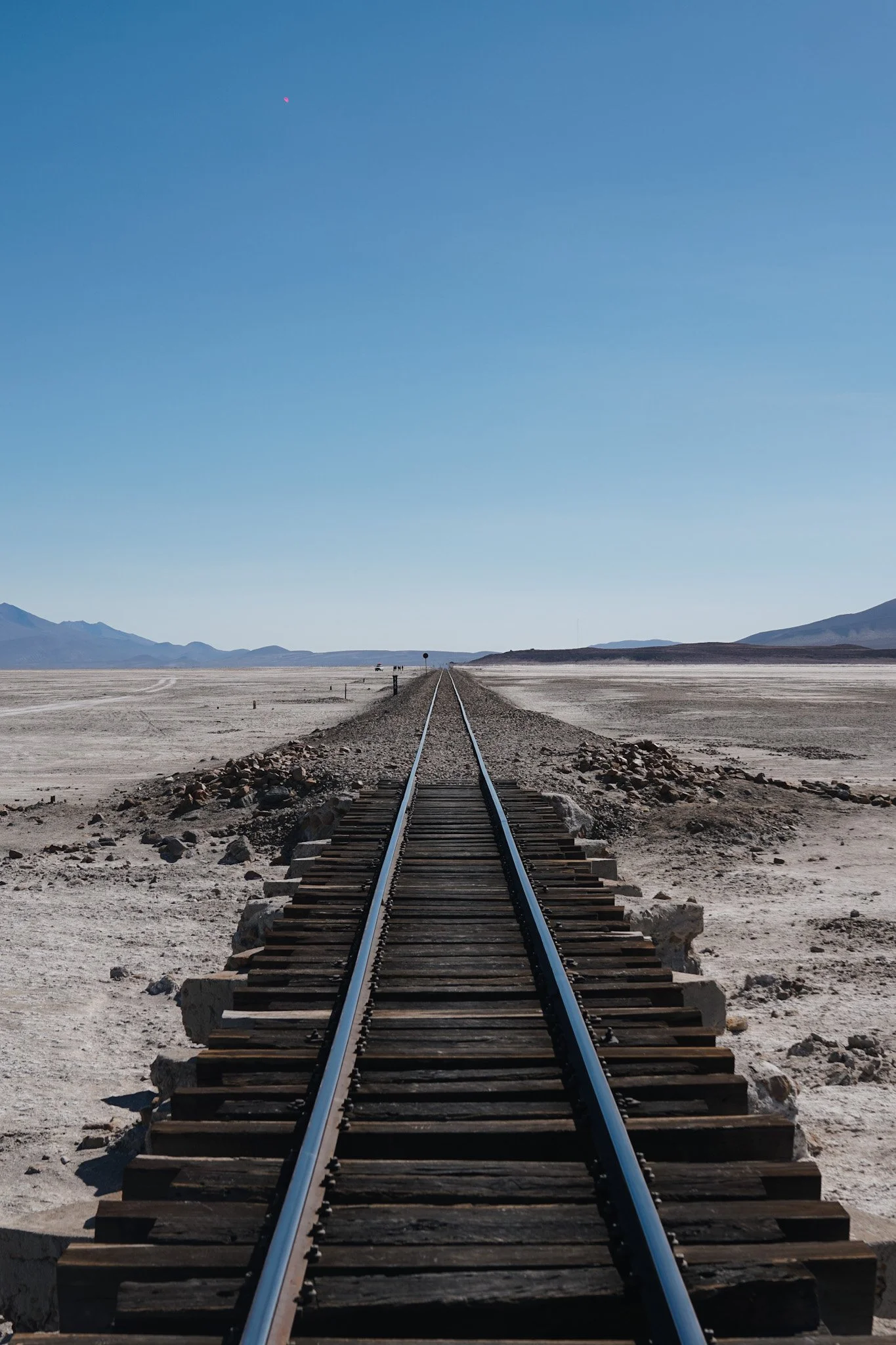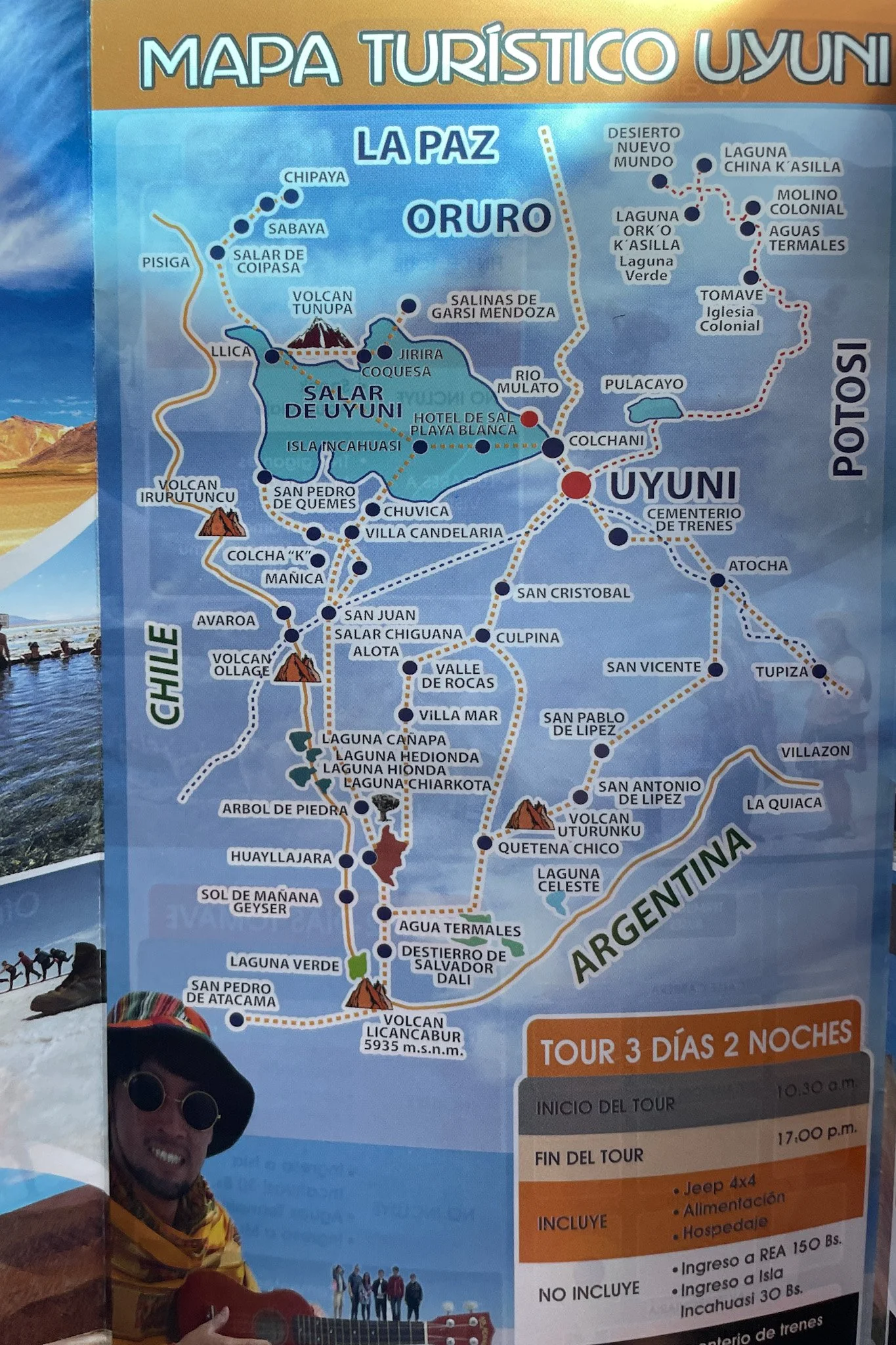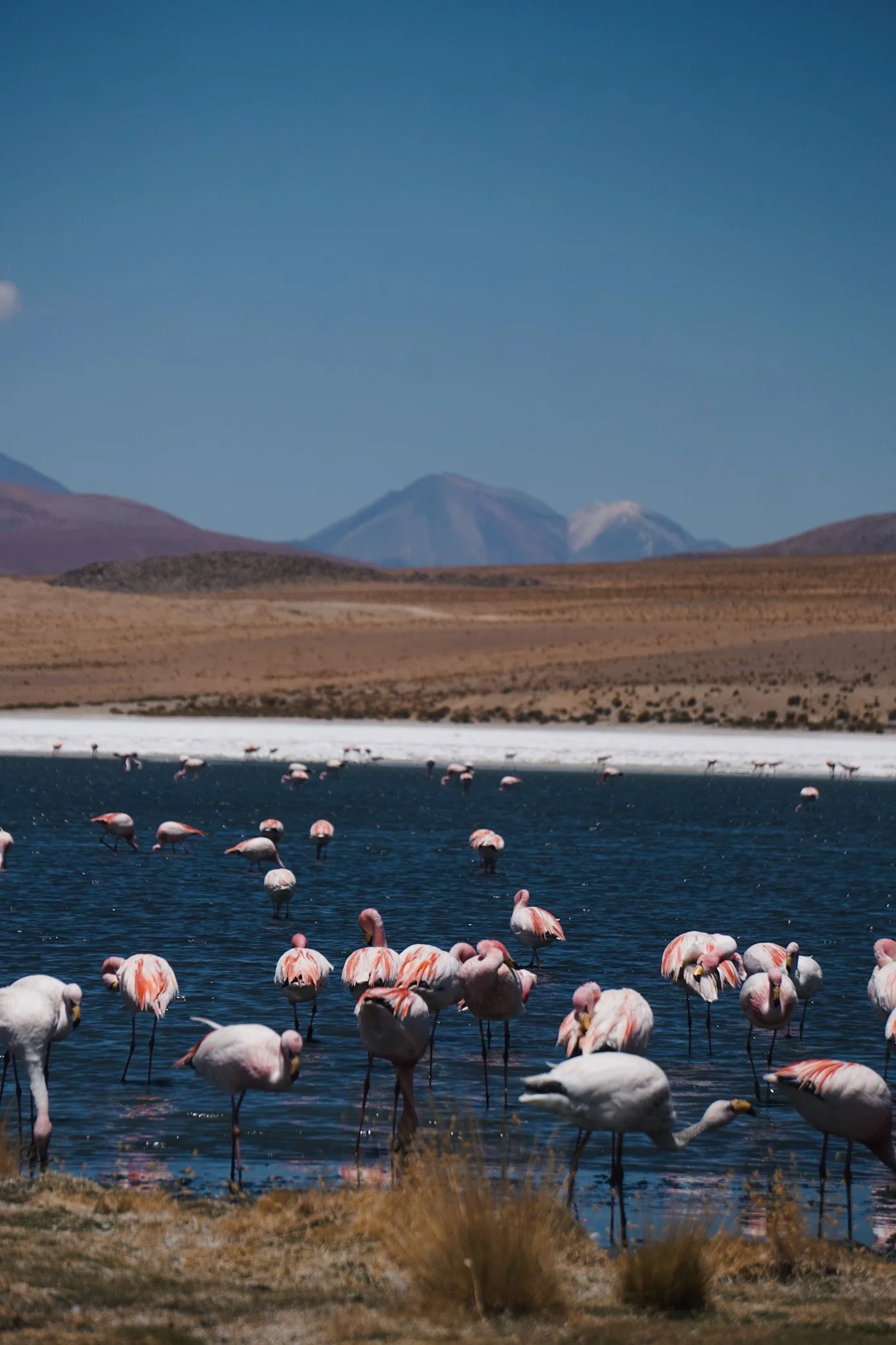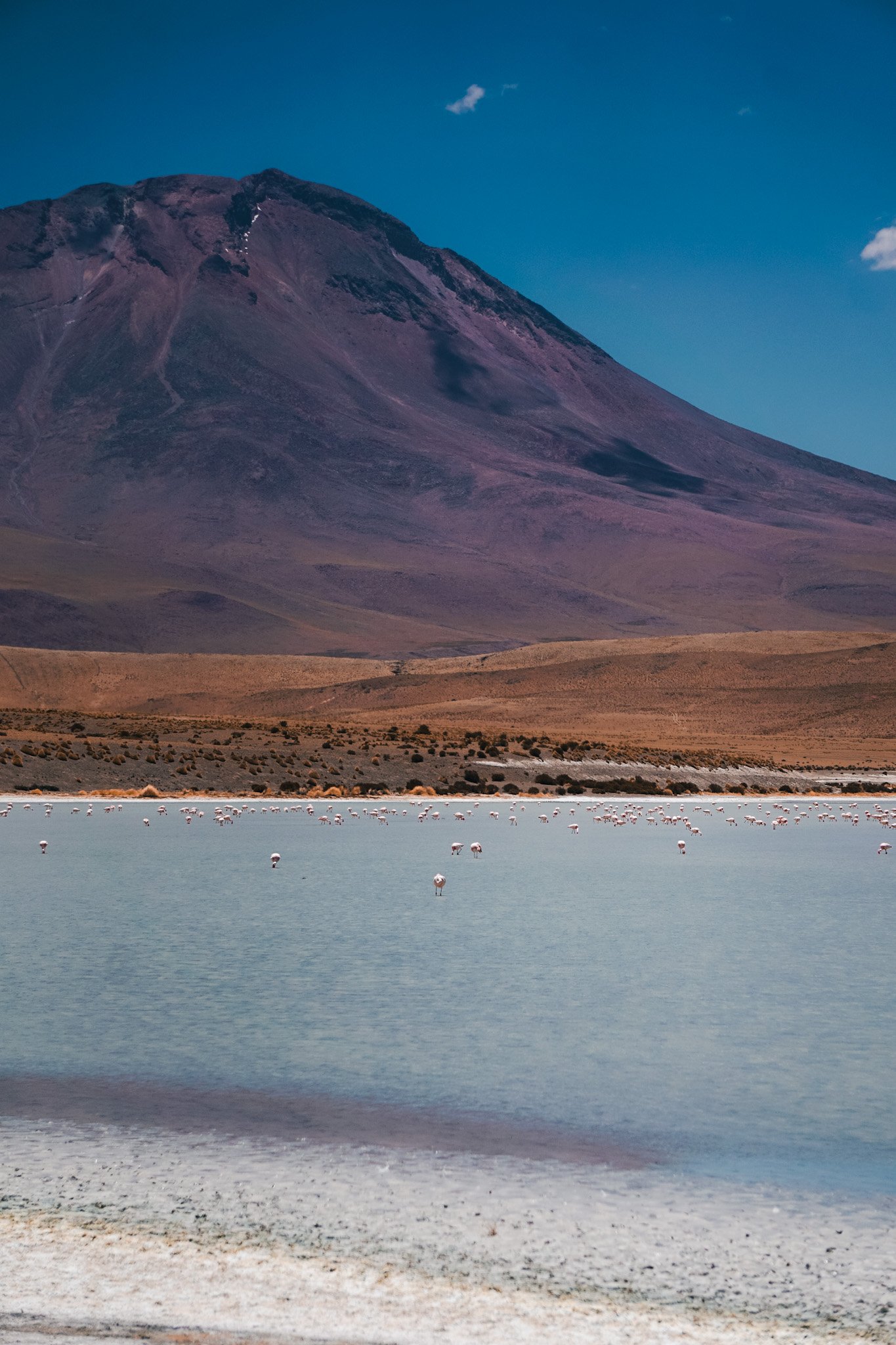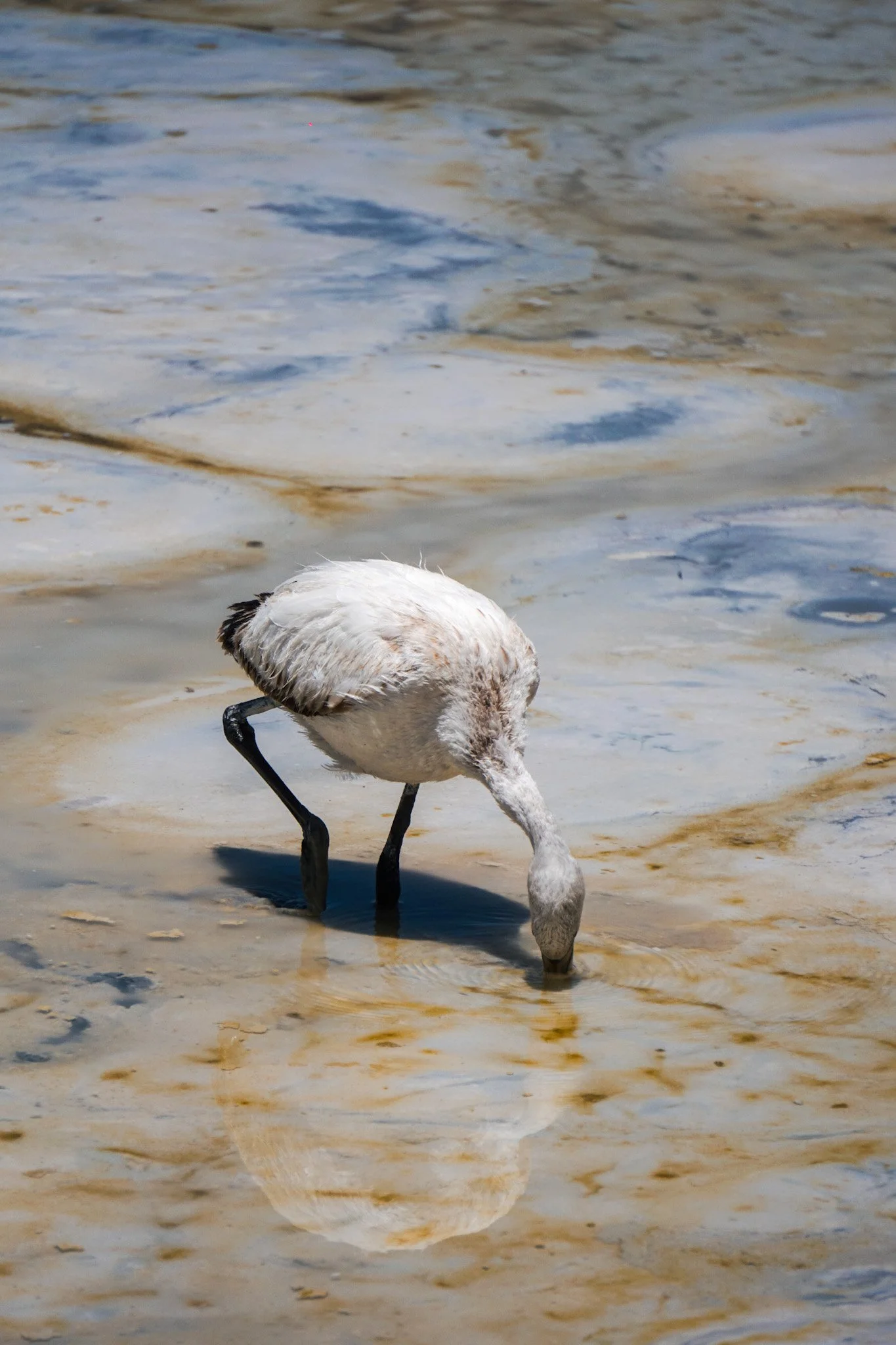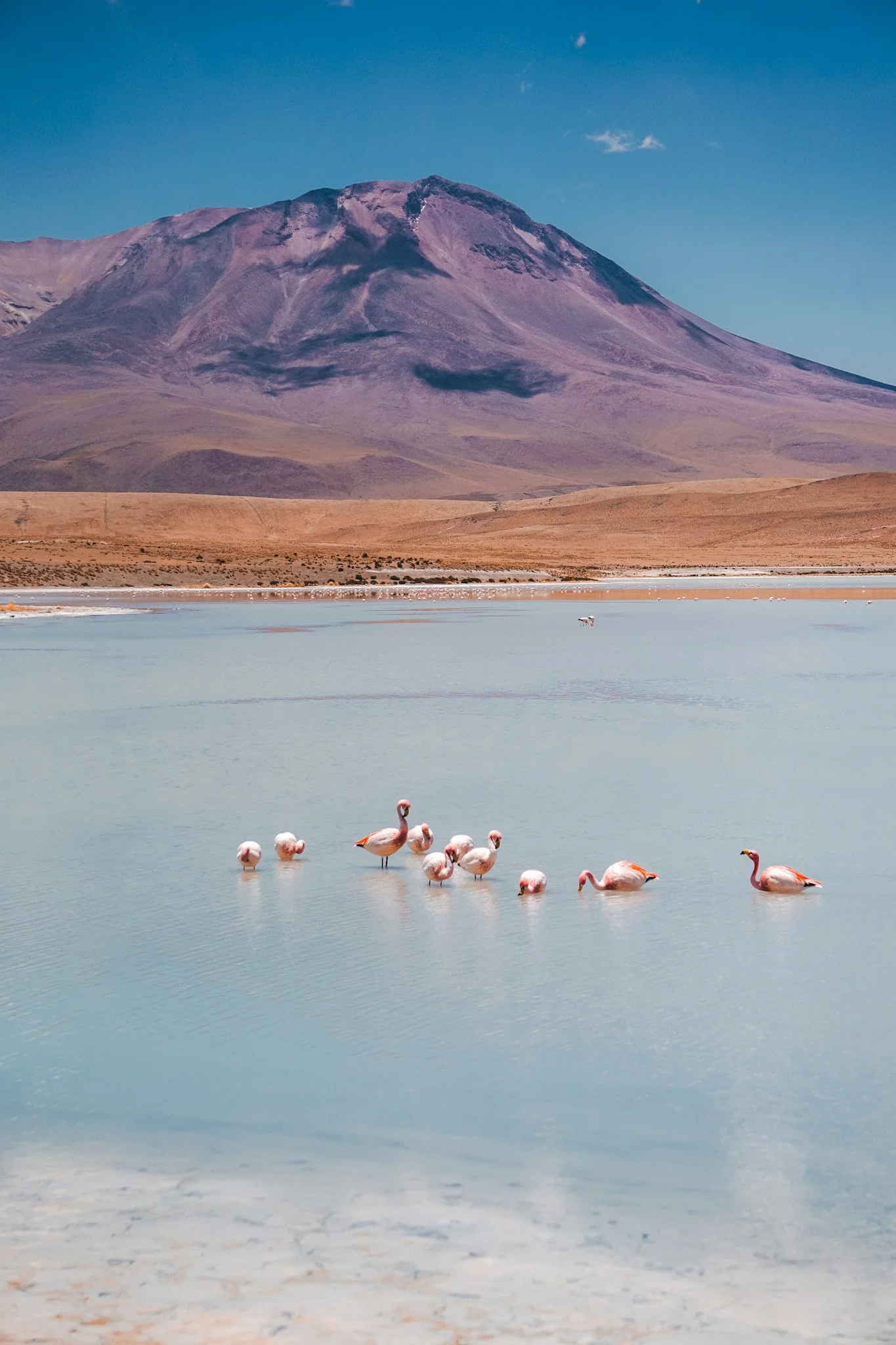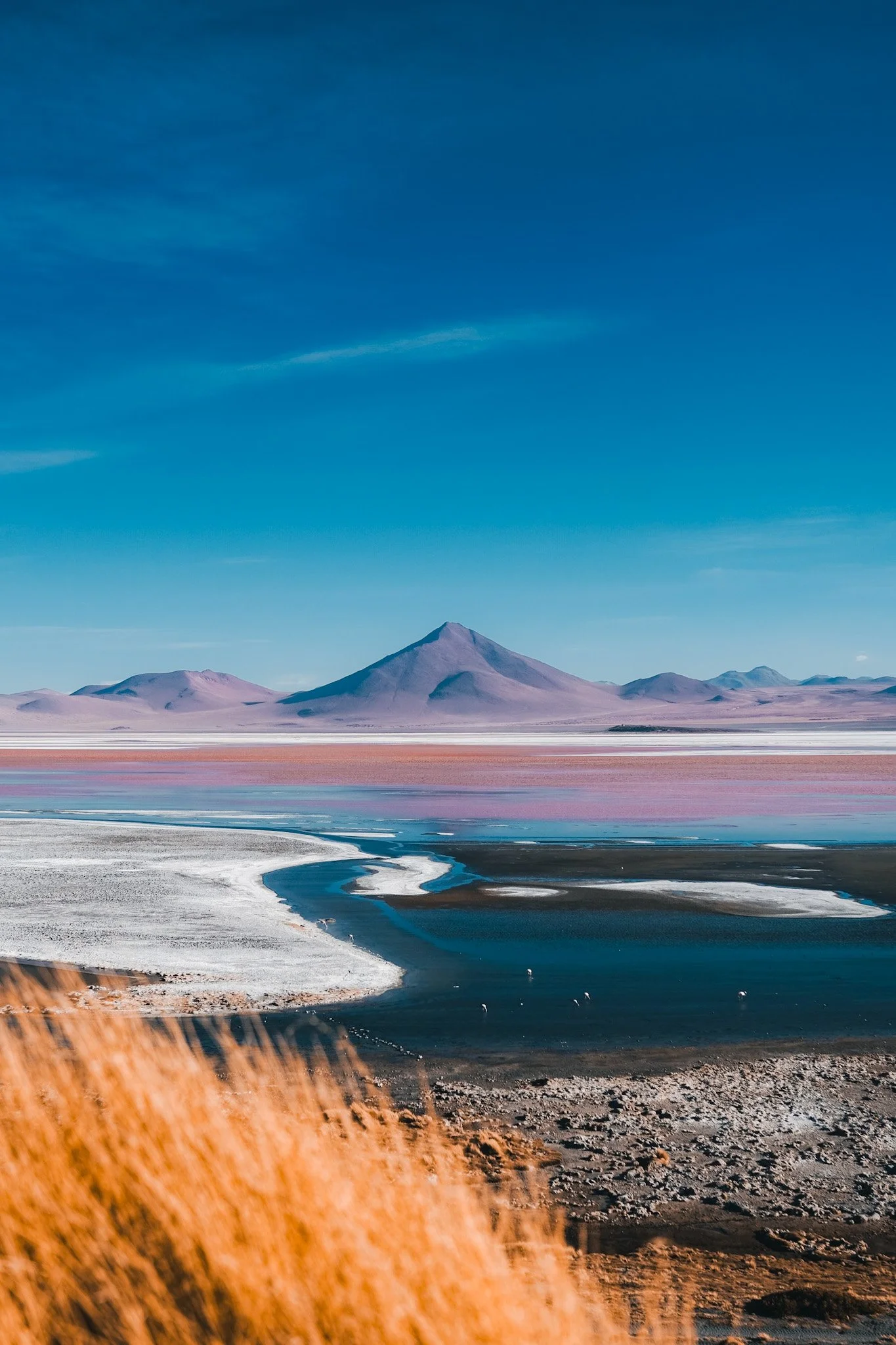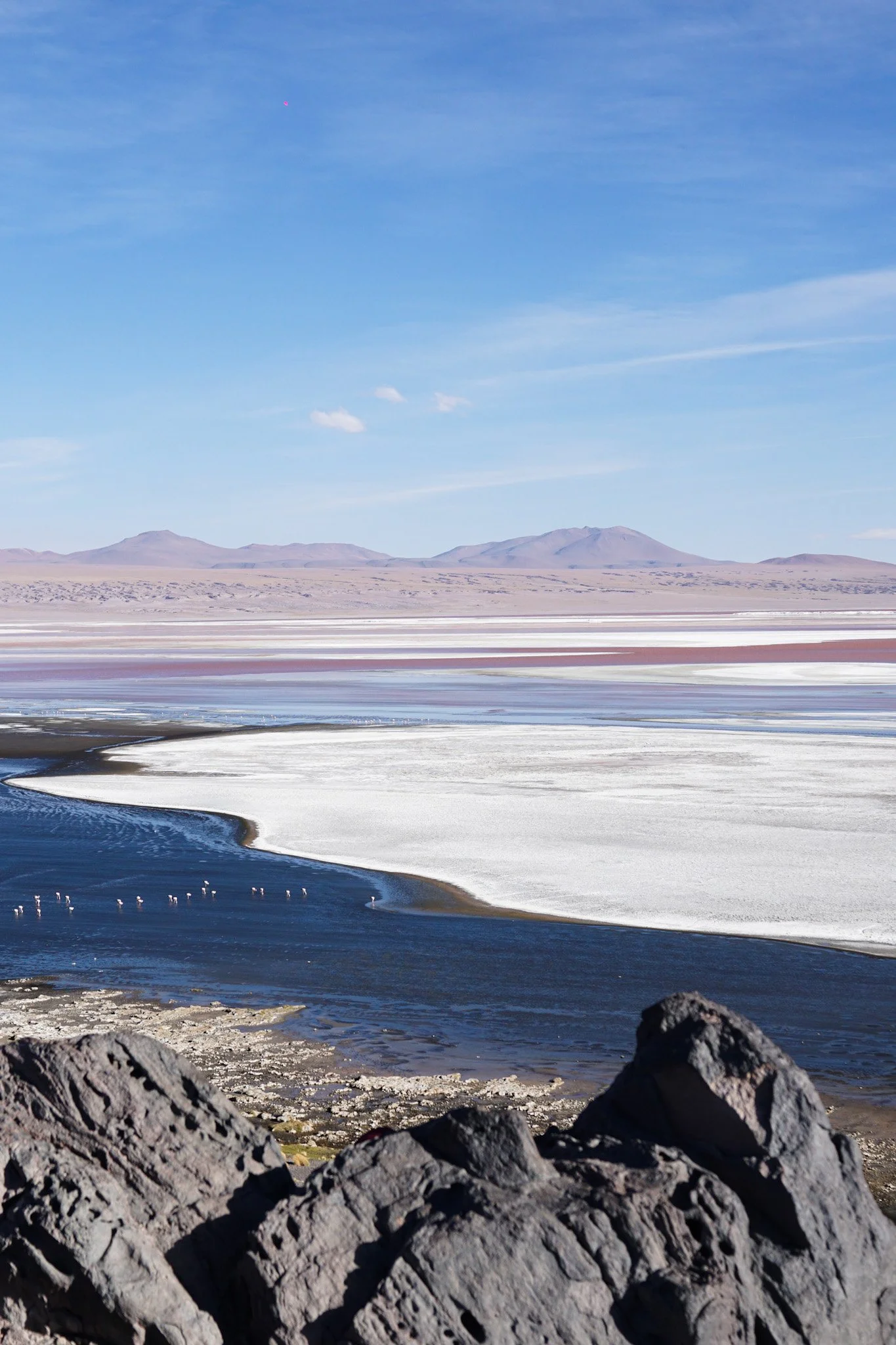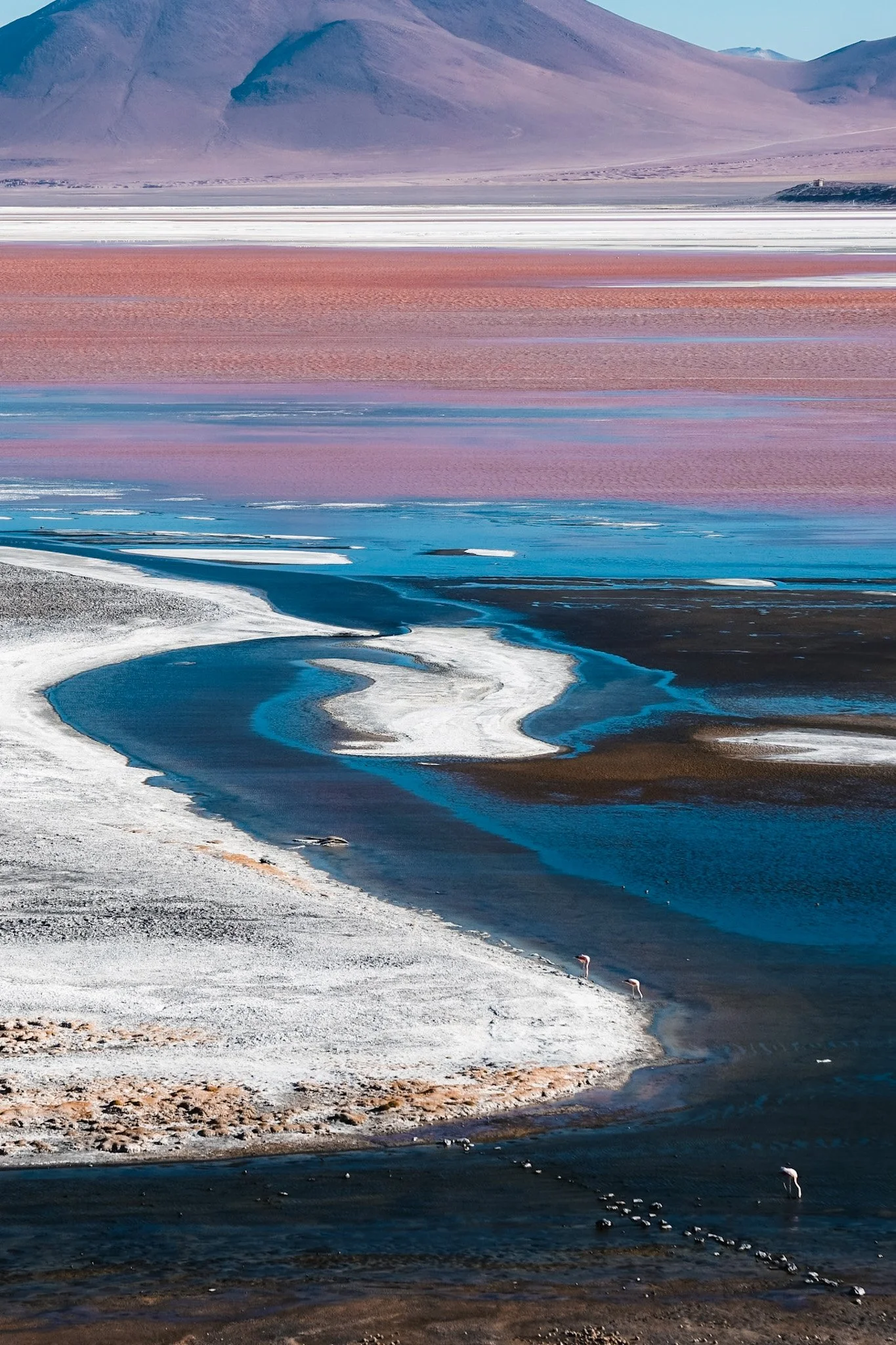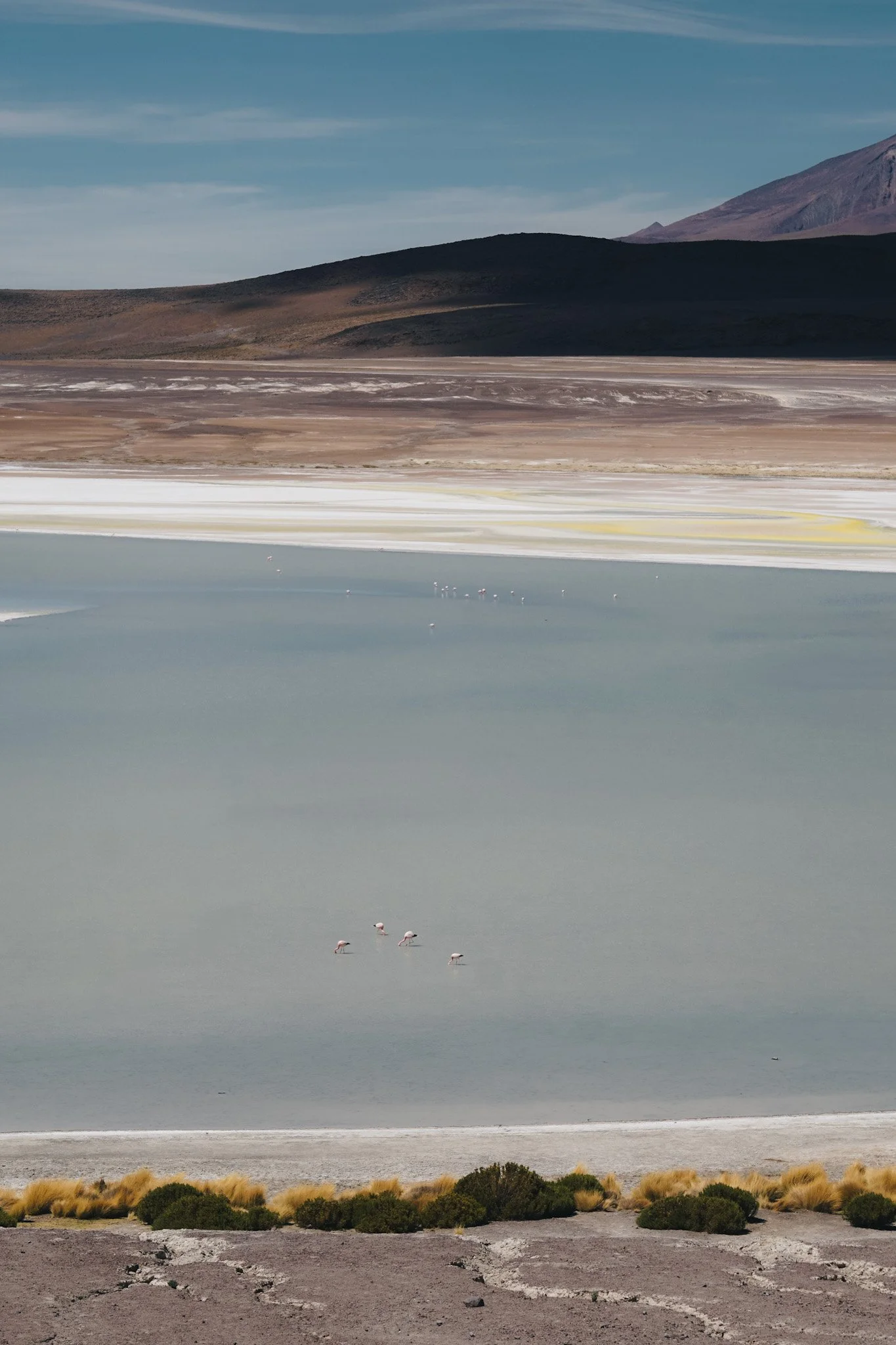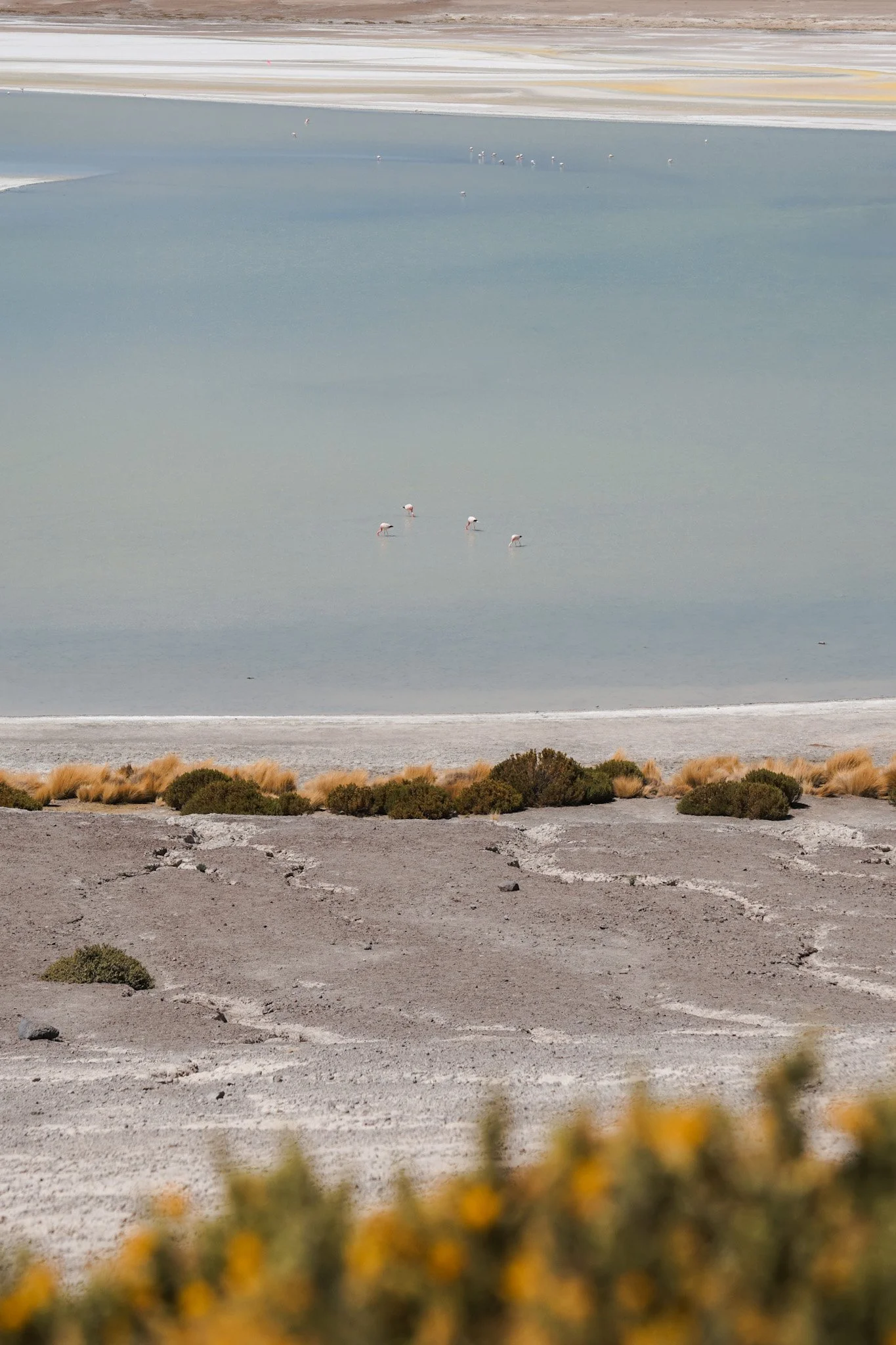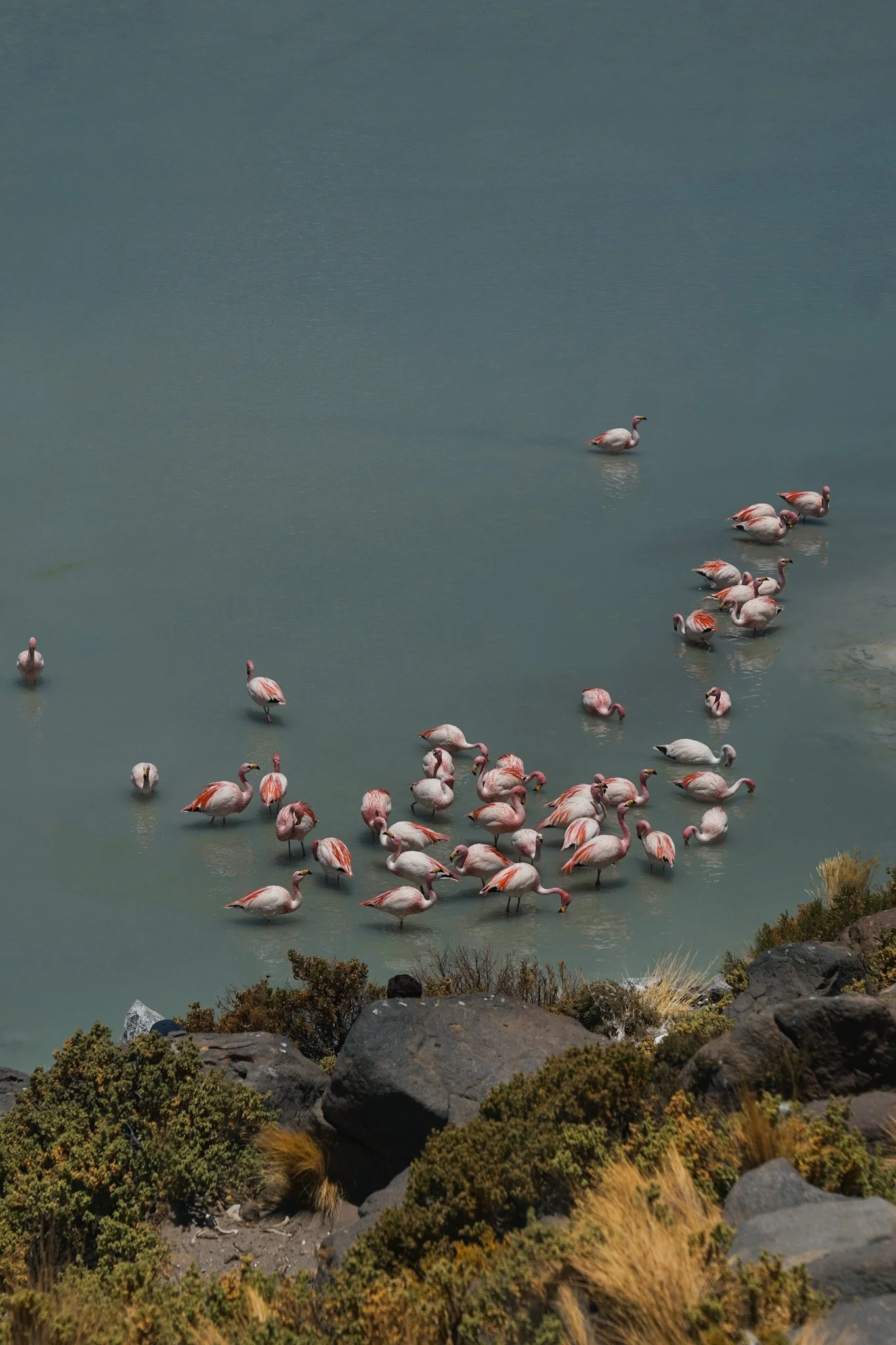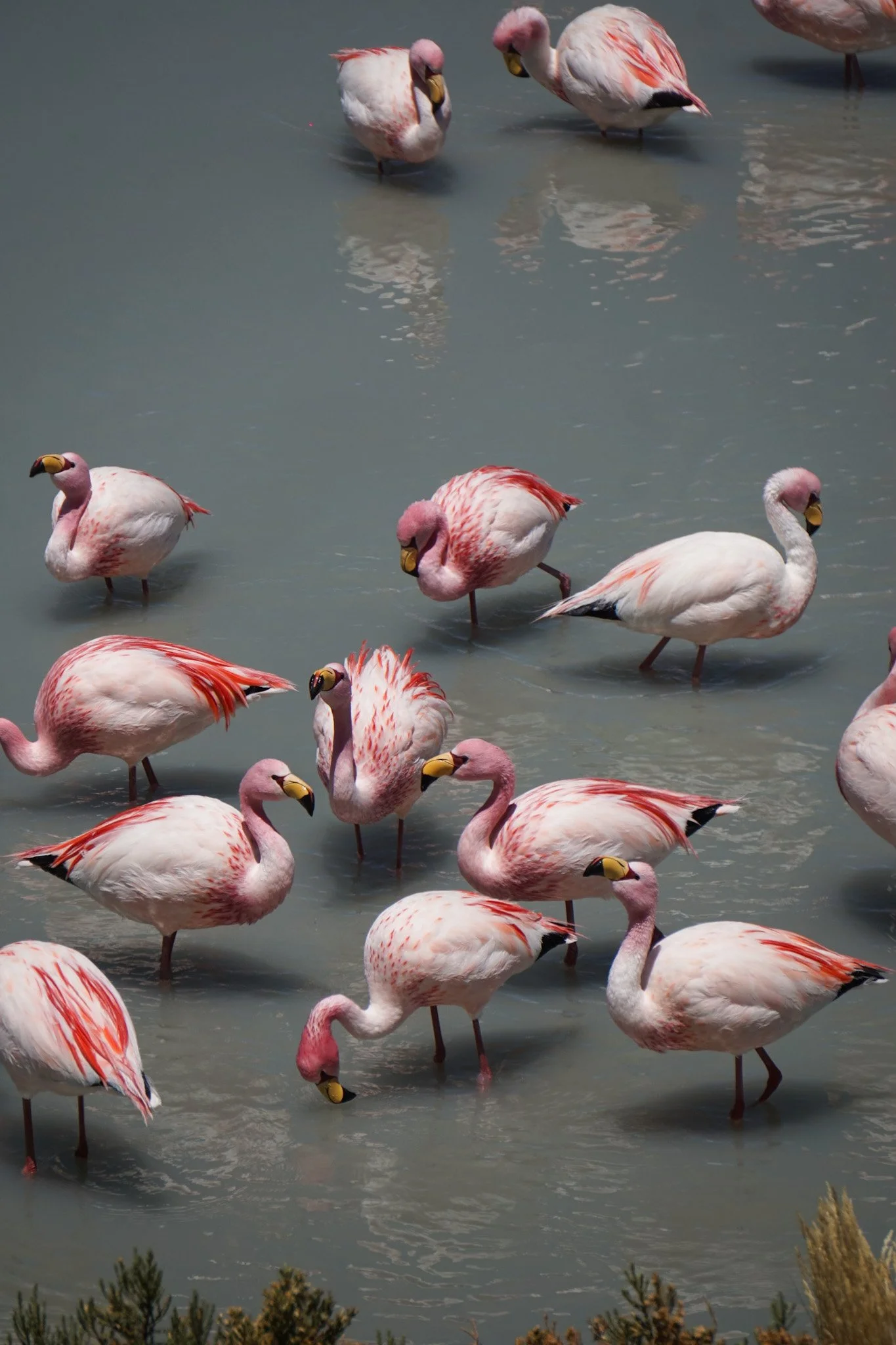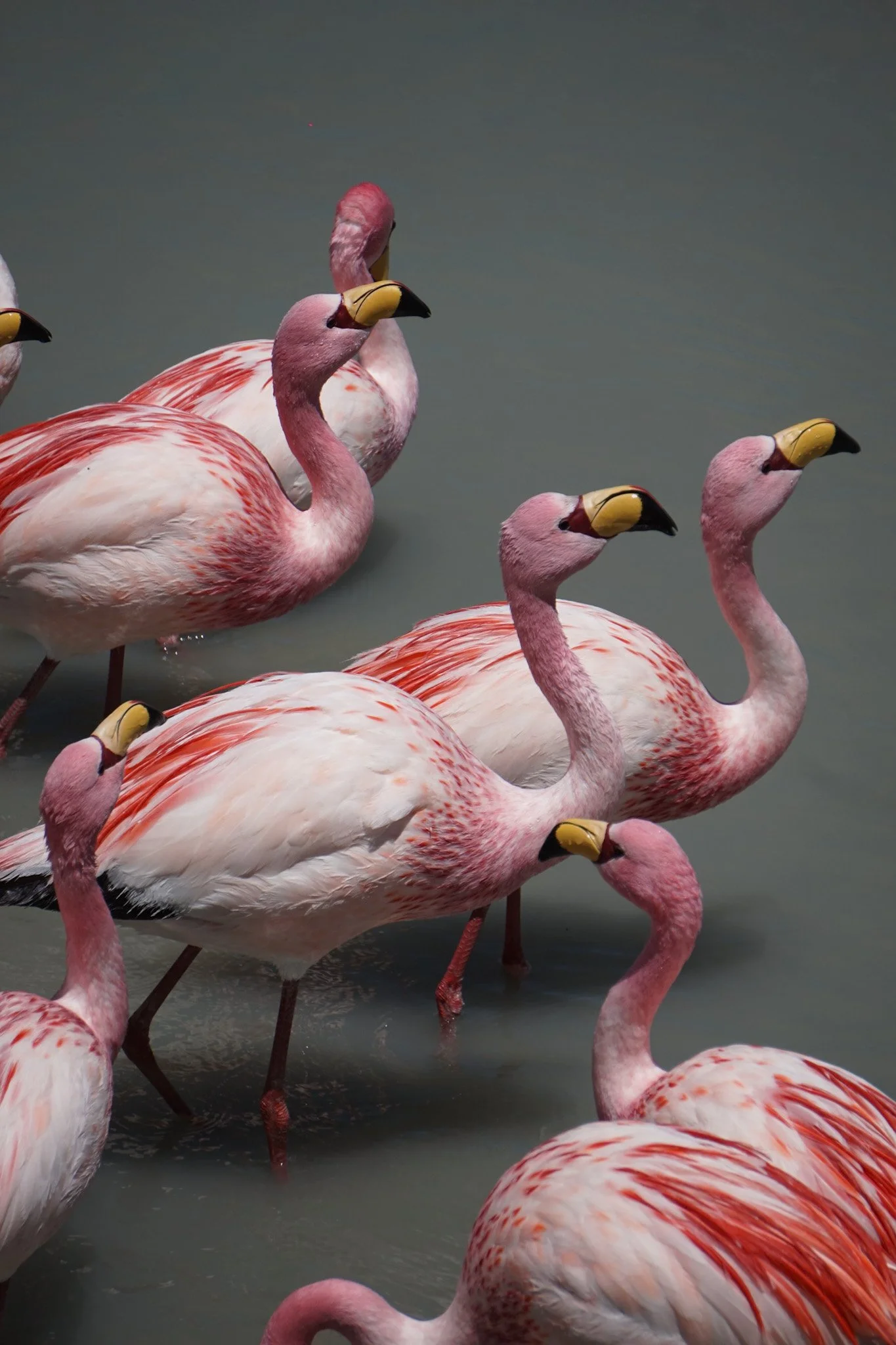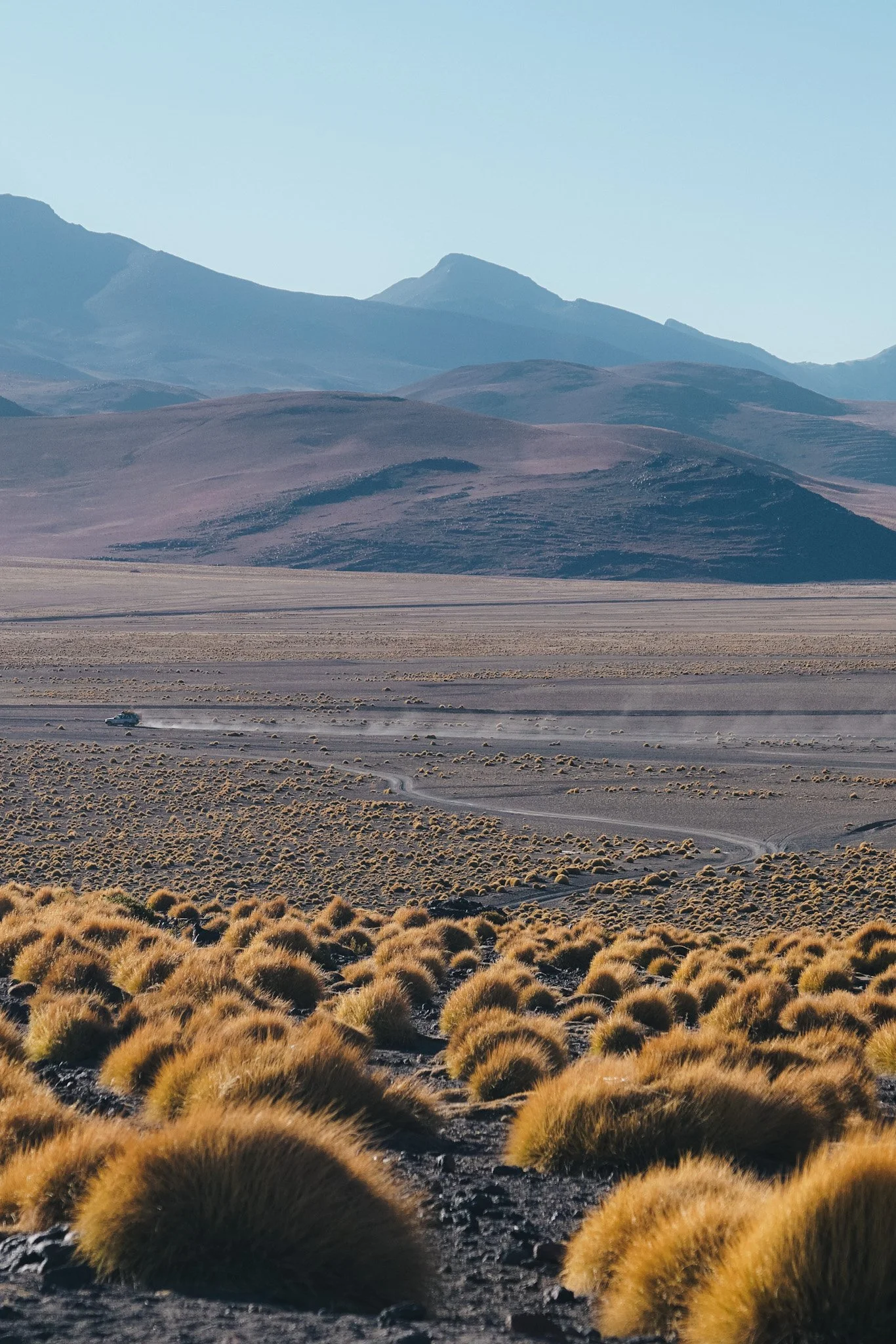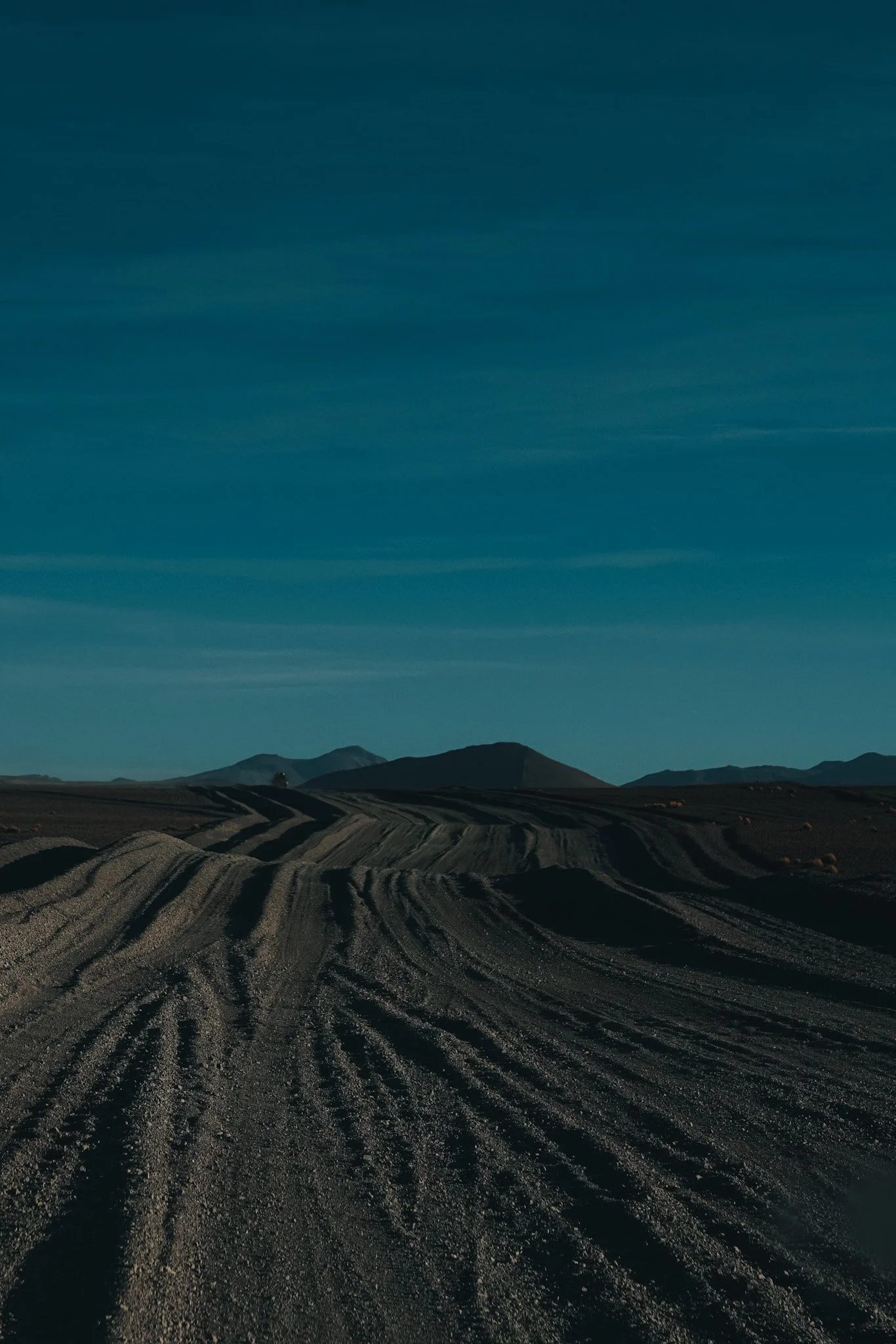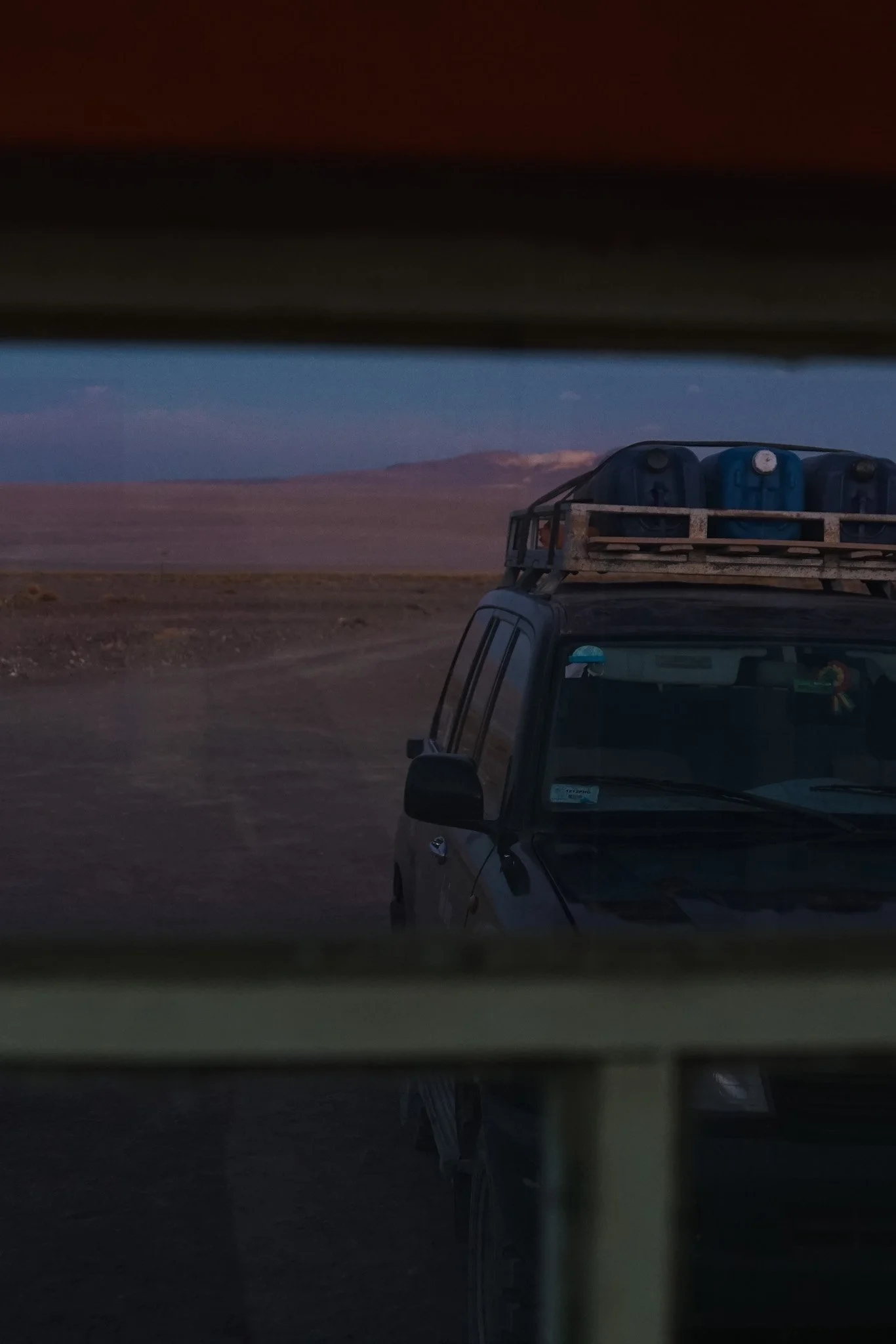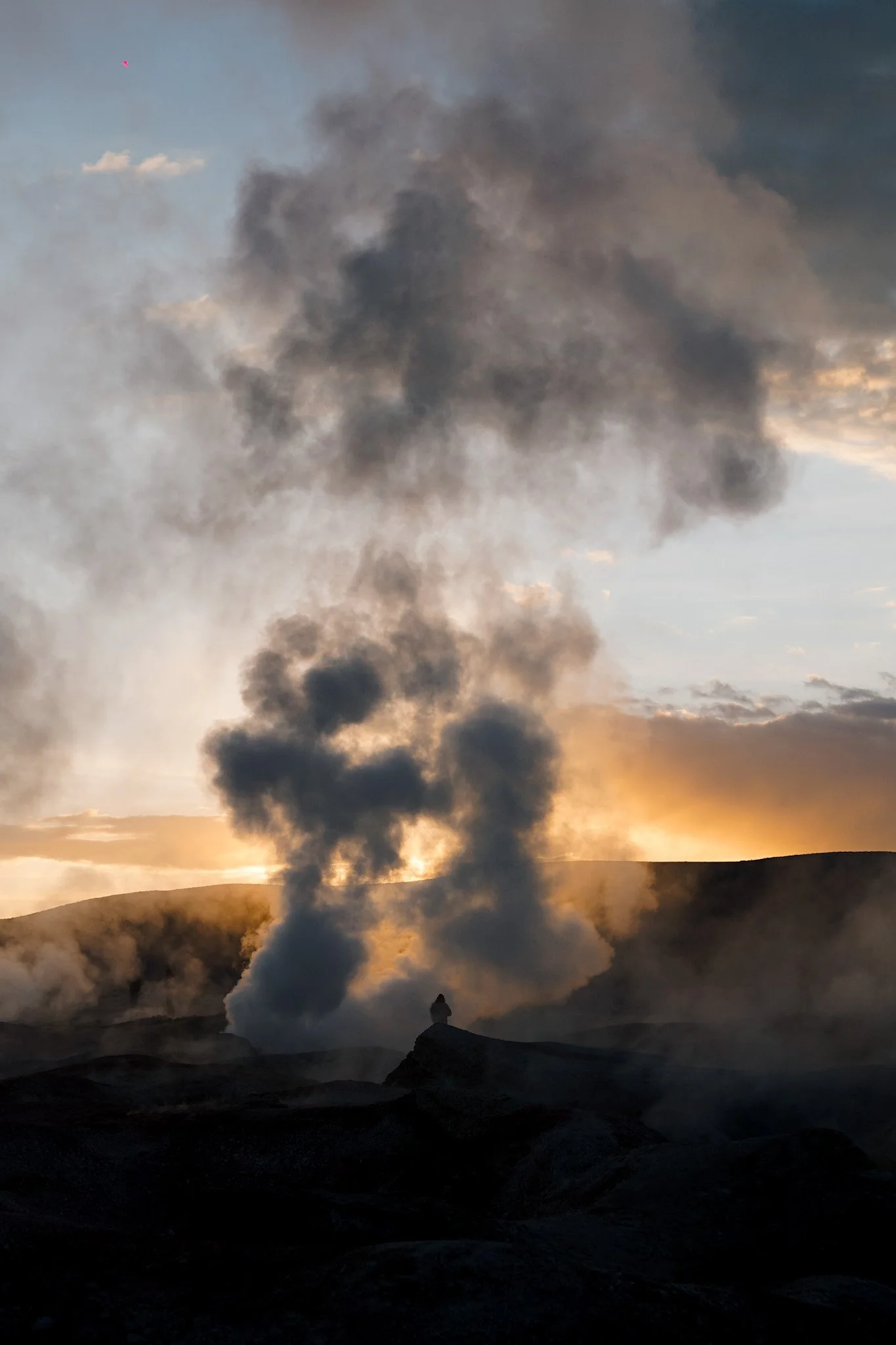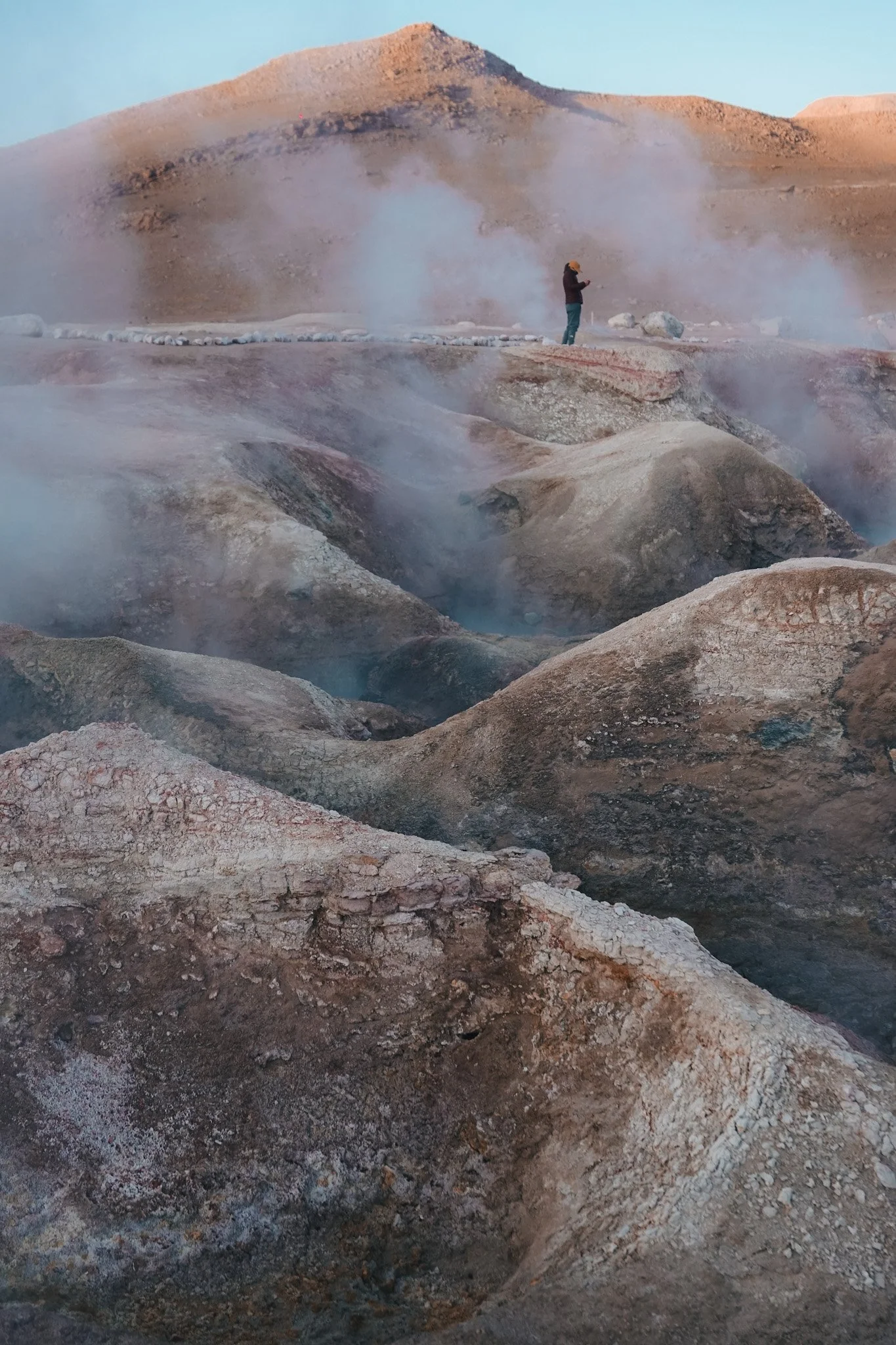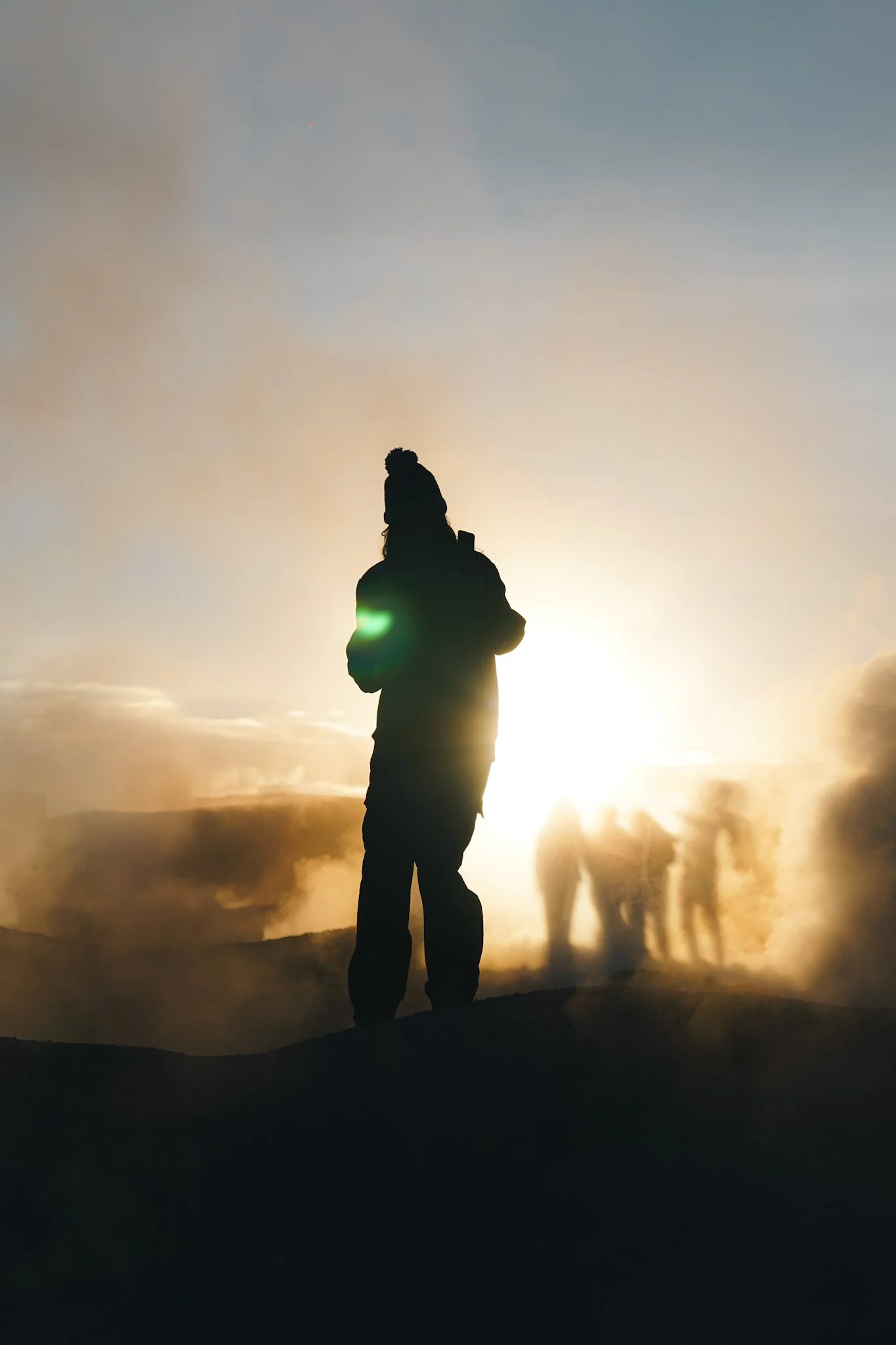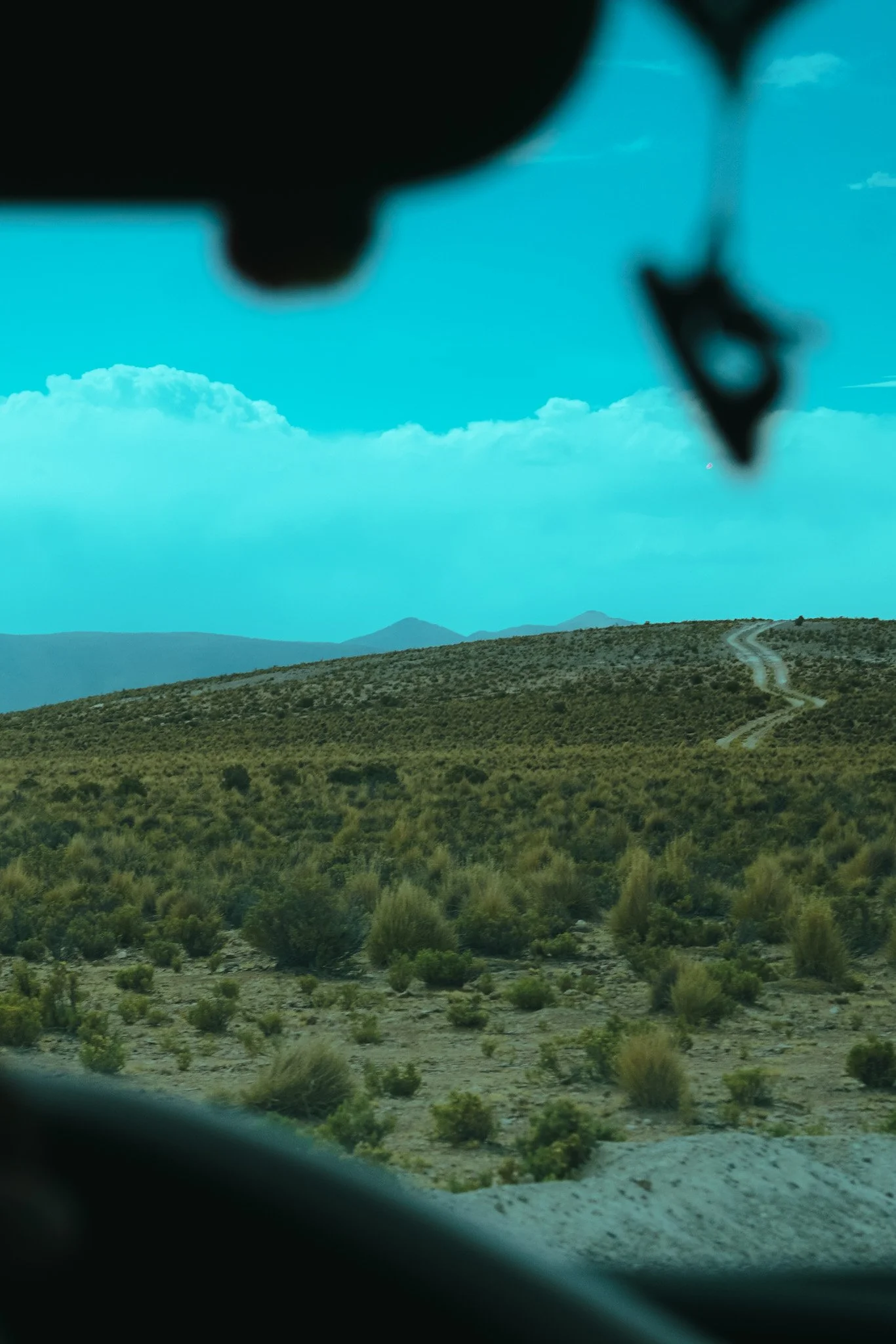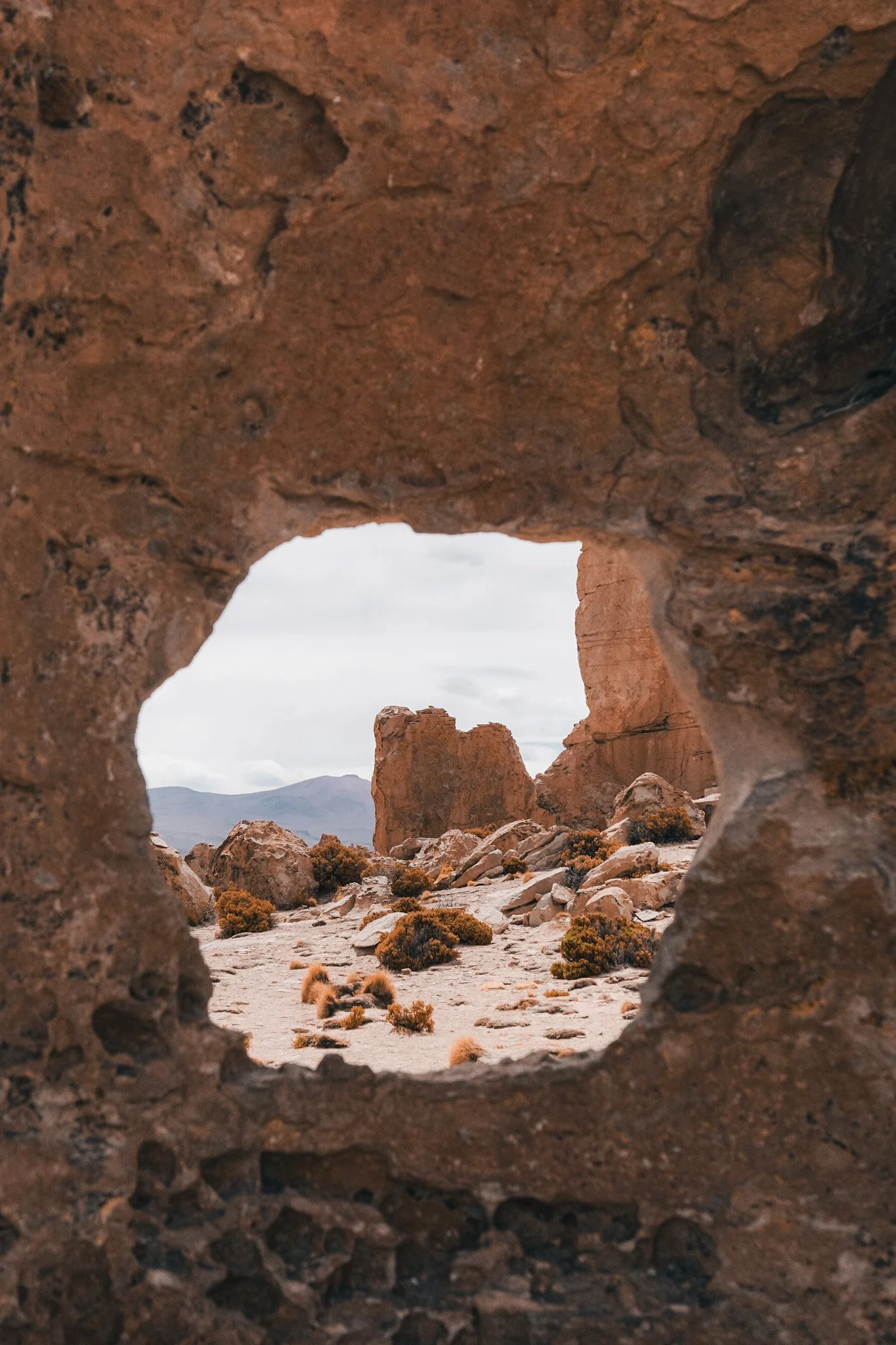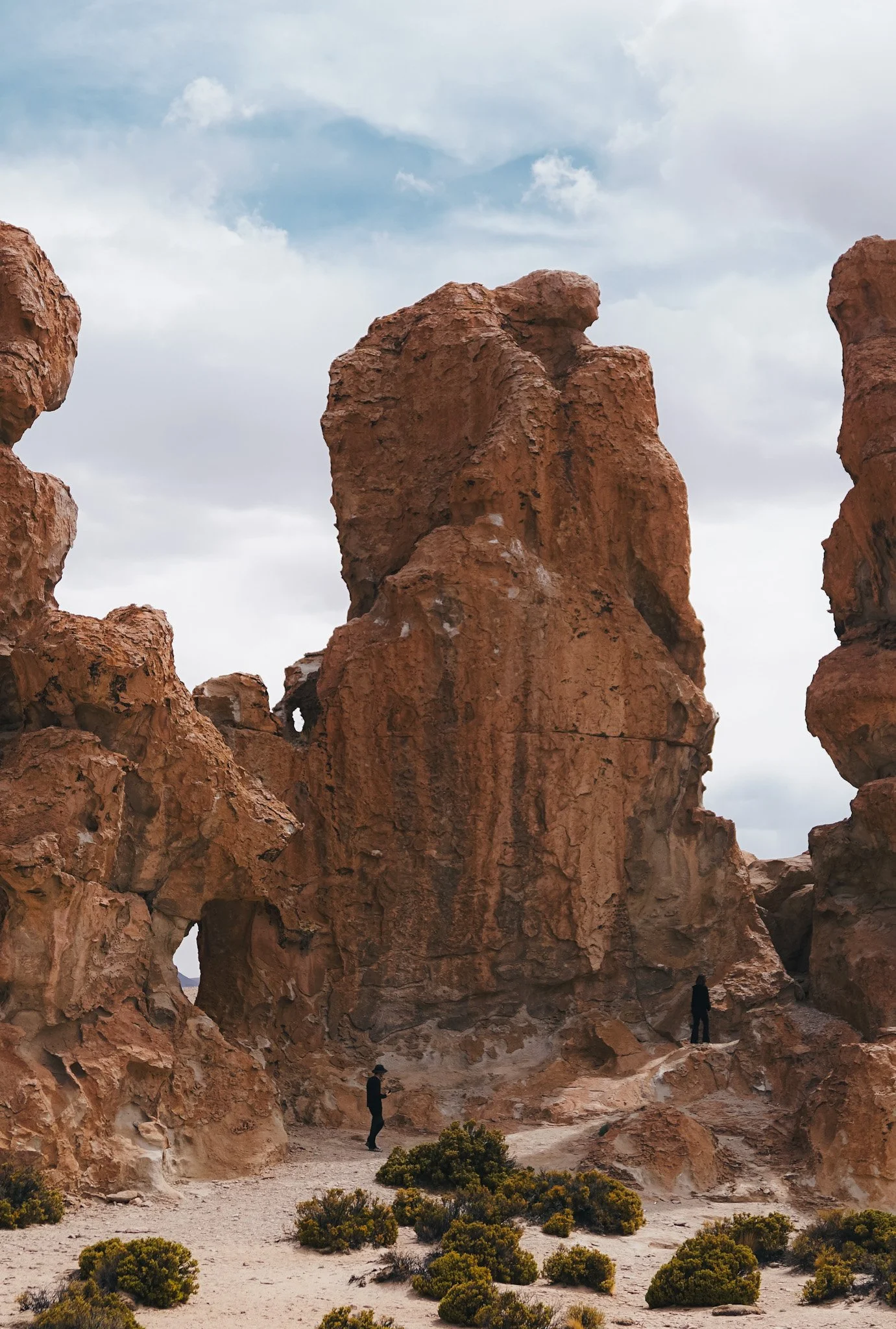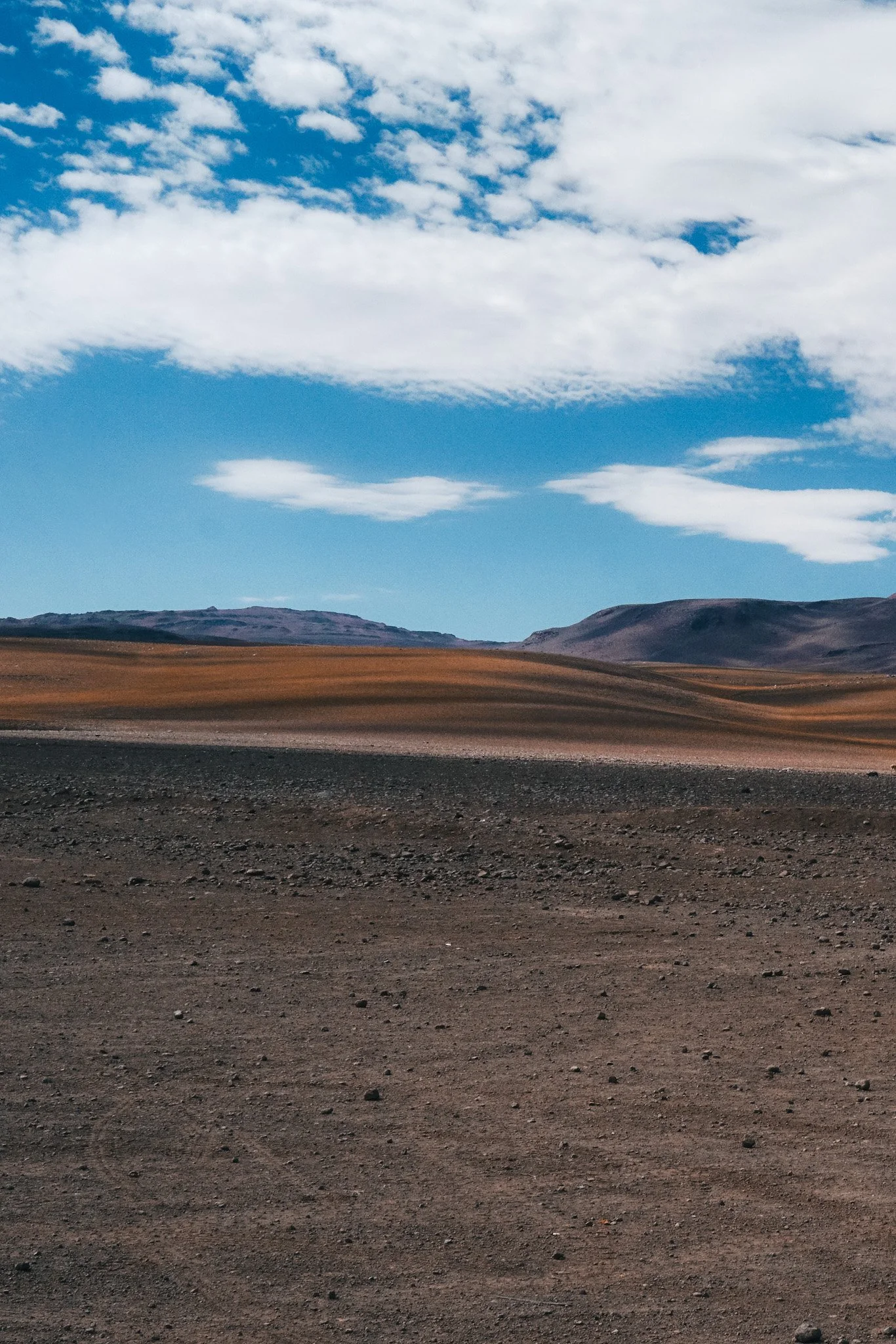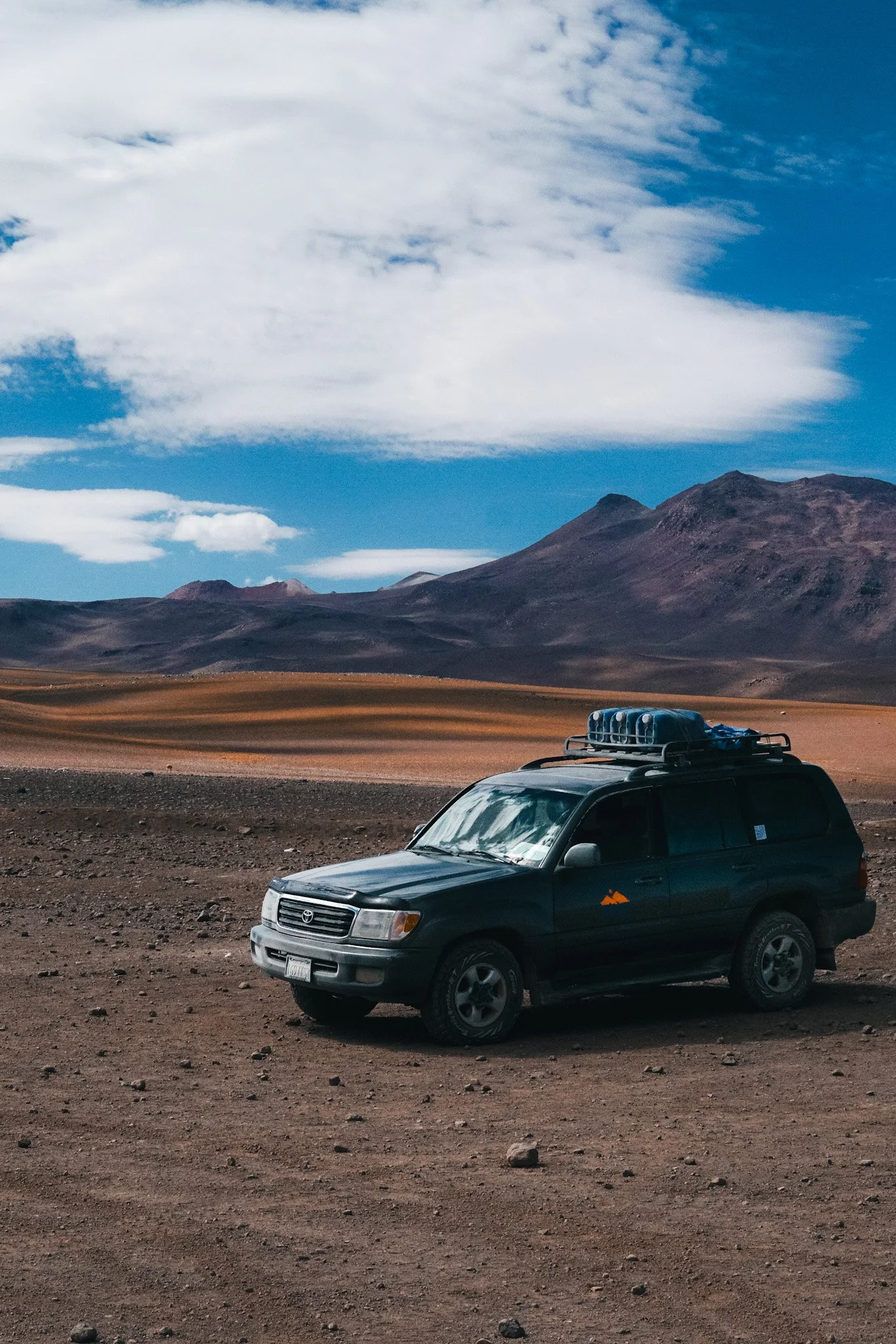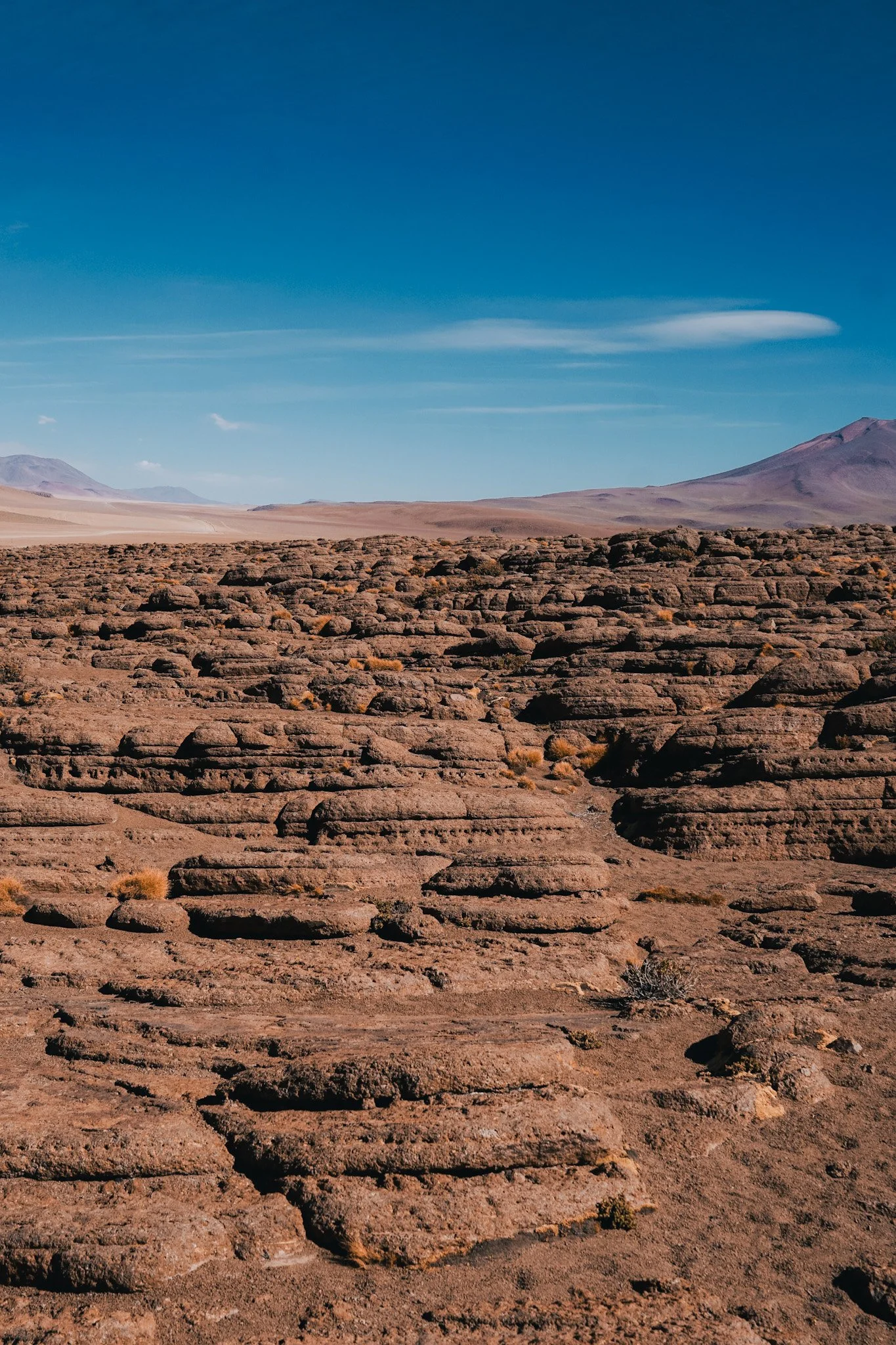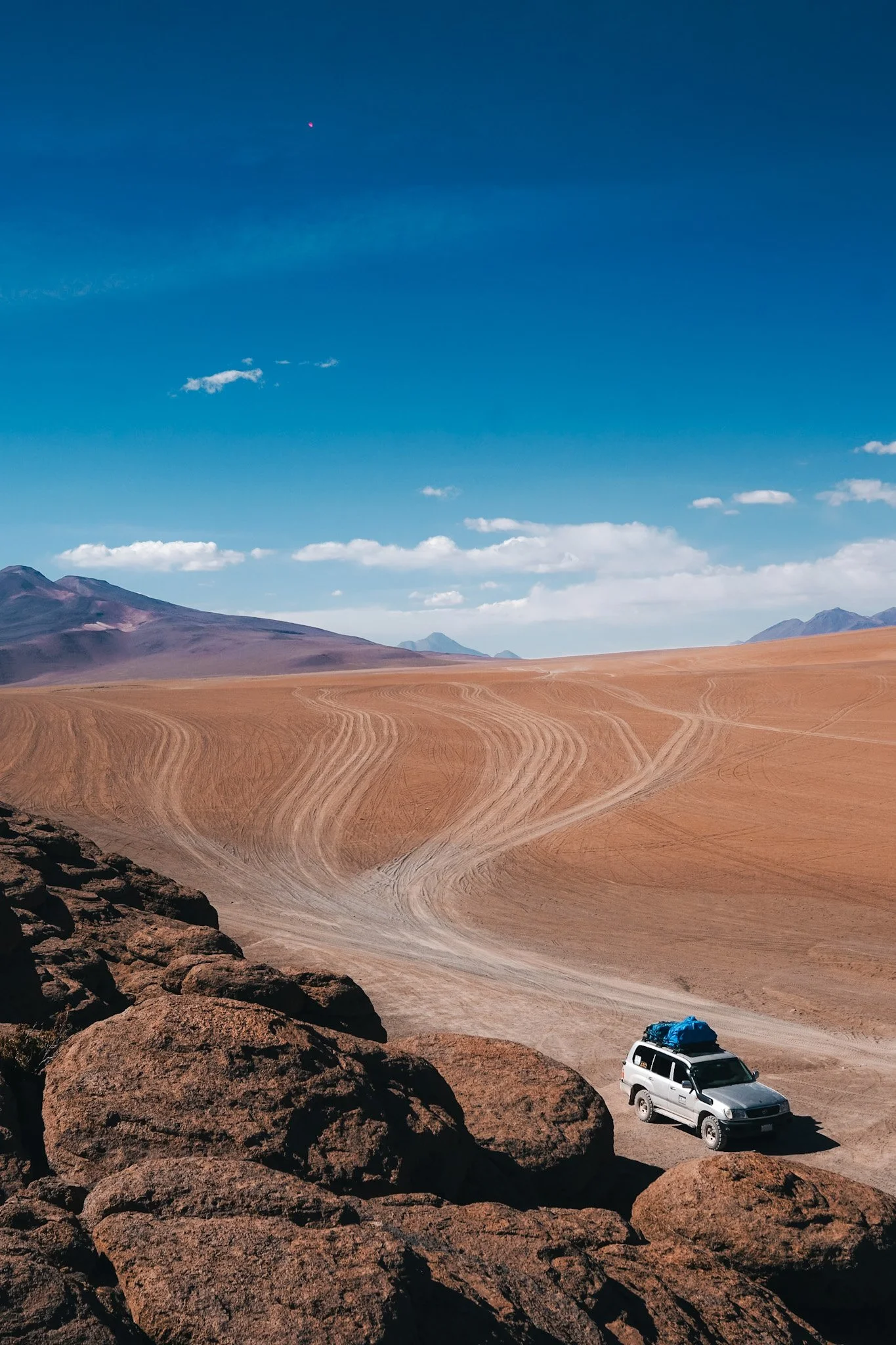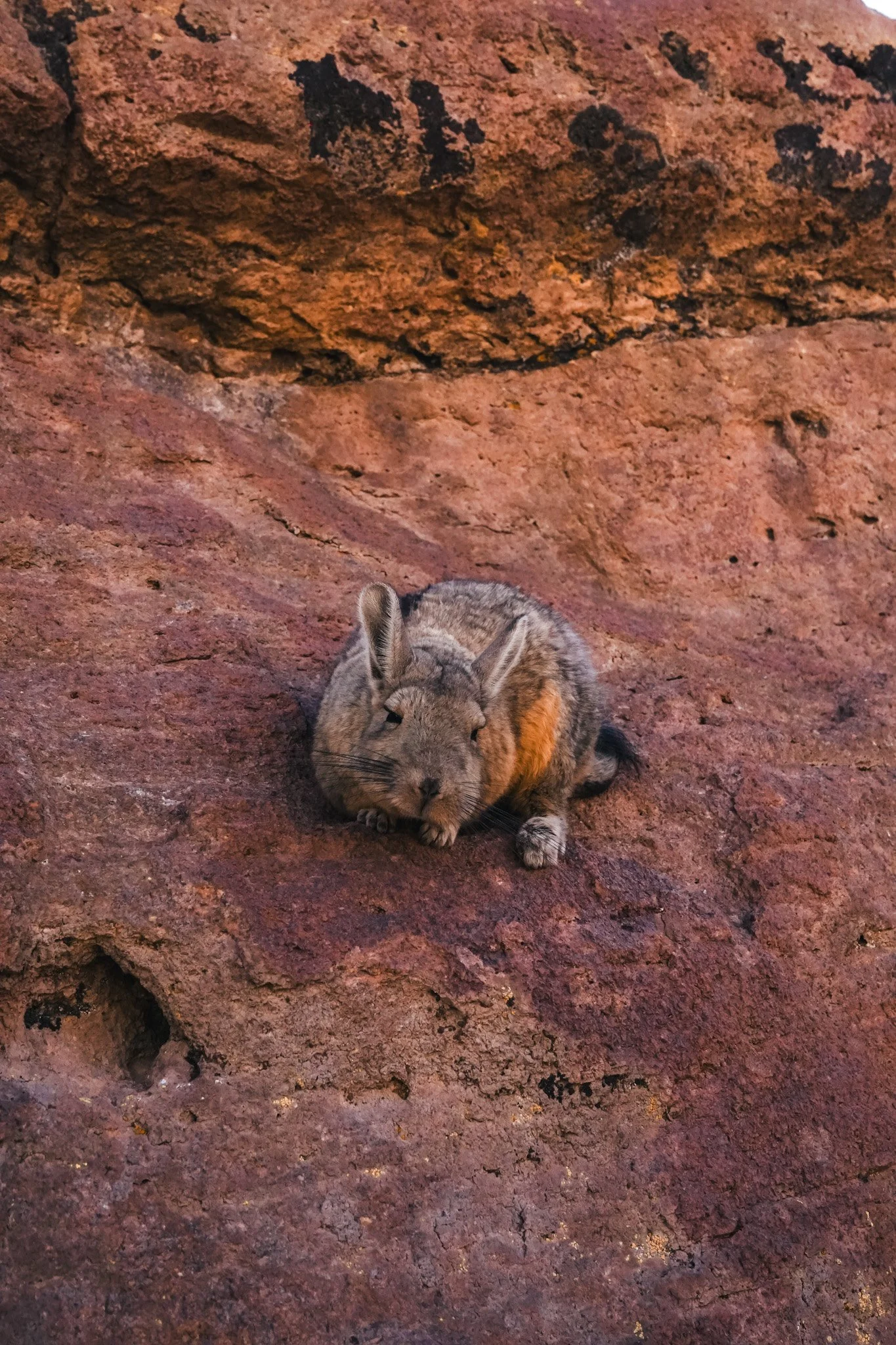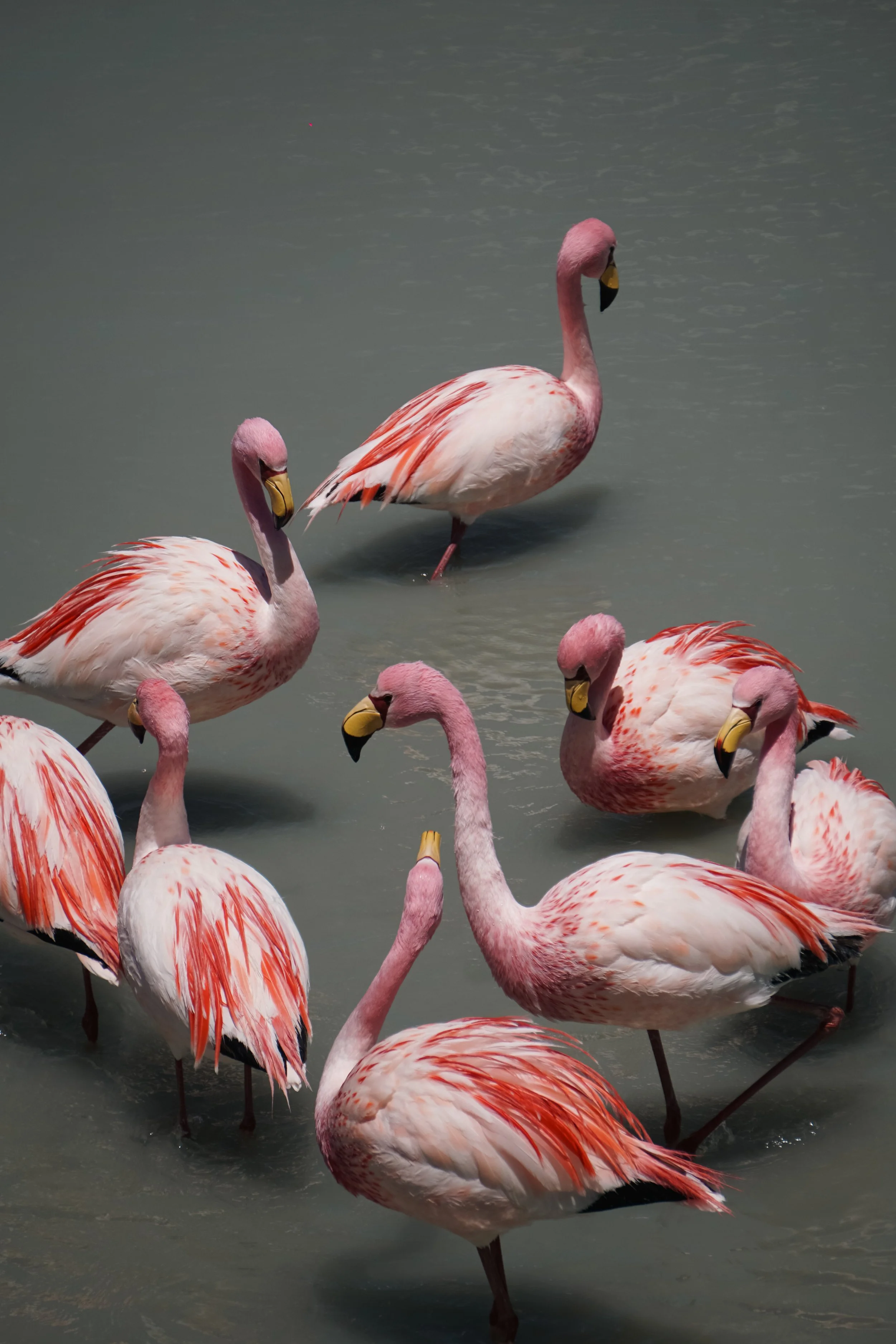
Bolivia > Reserva de Fauna
This page covers days two and three of the South Bolivia trip, after visiting the Uyuni Salt Flats.
The Eduardo Avaroa Andean Fauna National Reserve, located in southwestern Bolivia near the Chilean border, covers approximately 7,000 square kilometers. Set in the high Andes, it ranges from 4,000 to over 5,000 meters above sea level.
The reserve is home to llamas, alpacas, vicuñas, guanacos, and various flamingo species. Its colorful lagoons, such as Laguna Colorada and Laguna Verde, are notable, with Laguna Colorada's red waters caused by algae. The reserve features geothermal wonders like the Sol de Mañana geyser field and the Stone Tree, a unique rock formation shaped by wind. The arid, cold climate leads to desert-like conditions with extreme temperature fluctuations. Popular with adventure travelers, the reserve offers hiking, wildlife viewing, and stunning scenery. It plays a crucial role in preserving Andean flora and fauna.
Here’s a sample program. The order of the stops might change based on your guide’s preferences.
Day 2: Eduardo Avaroa Andean Fauna National Reserve
Morning
Depart for the National Reserve
Early start to drive south towards the Eduardo Avaroa Andean Fauna National Reserve, known for its diverse landscapes and wildlife.Laguna Hedionda
Visit Laguna Hedionda, known for its large populations of flamingos. You can also see other bird species and enjoy the stunning views. I had lunch here.
Midday
Laguna Colorada
Arrive at Laguna Colorada, a shallow salt lake famous for its red-colored waters due to algae and rich minerals. It’s a prime spot for flamingo watching.
Afternoon
Laguna Verde
Drive to Laguna Verde, a striking green lake at the foot of the Licancabur Volcano, where you can enjoy the contrasting colors and reflections in the water.
Evening
Desert Lodge
Drive through the desert and overnight in a basic desert lodge or a mountain refuge. Enjoy dinner and rest in the peaceful, remote surroundings.
Day 3: Return to Uyuni via San Cristobal and Valle de Rocas
Morning
Sol de Mañana Geysers
Visit the Sol de Mañana geothermal field, where you can see boiling mud pots, fumaroles, and steam pools, providing a fascinating glimpse into the earth’s geothermal activity.Arbol de Piedra
Continue to the Arbol de Piedra (Stone Tree), a unique rock formation sculpted by wind erosion in the middle of the Siloli Desert.Valle de Rocas
Start your return journey, stopping at the Valle de Rocas (Valley of Rocks), an area with dramatic rock formations and panoramic desert views.
Midday
Lunch on the Road
Enjoy a packed lunch or stop in a local village en route to Uyuni.
Afternoon
Return to Uyuni
Continue your journey back to Uyuni, with opportunities for more photo stops along the way.Free Time in Uyuni
Upon arrival, take some time to explore the town, shop for souvenirs, or relax after your adventure.
Evening
End of Tour
Depending on your travel arrangements, you can either stay the night in Uyuni or prepare for an evening bus or flight to your next destination.
Additional Notes
Altitude
Keep in mind that much of this tour is at high altitude, so take it easy, stay hydrated, and listen to your body.Weather
The weather can be very cold, especially at night, so pack accordingly with warm layers.
Customizations
The itinerary can be customized based on your interests, such as adding a visit to the Galaxy Caves or spending more time in specific locations.
This 3-day itinerary will give you a comprehensive experience of Uyuni and its surrounding natural wonders.

